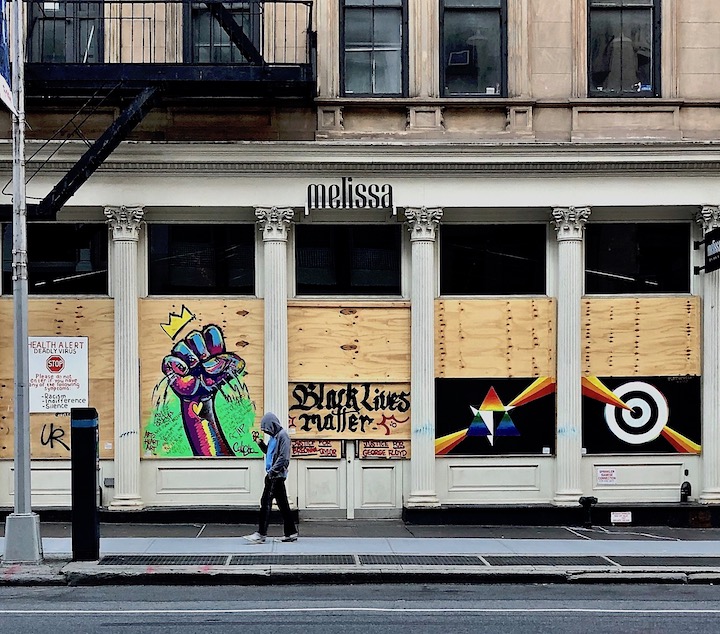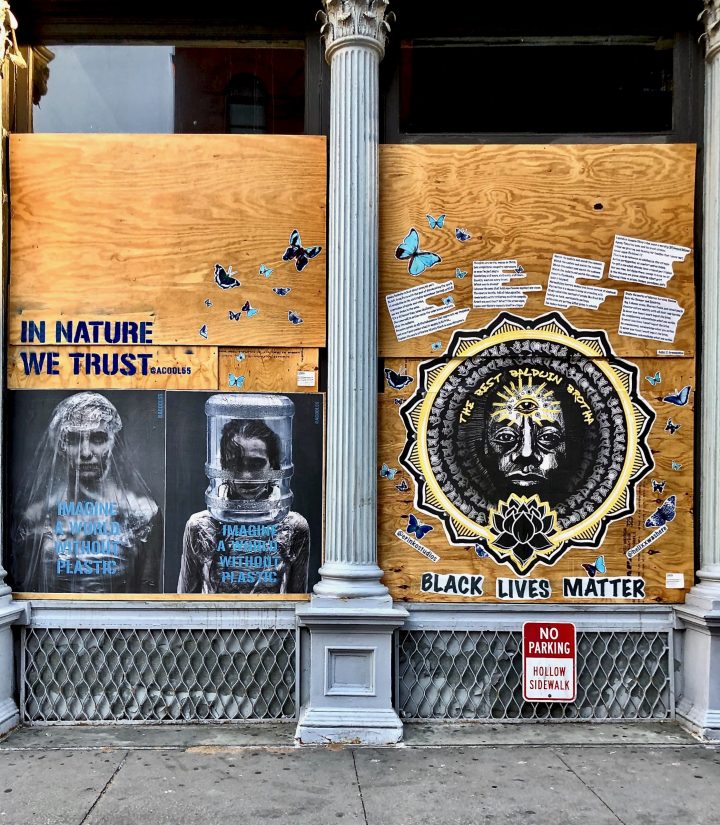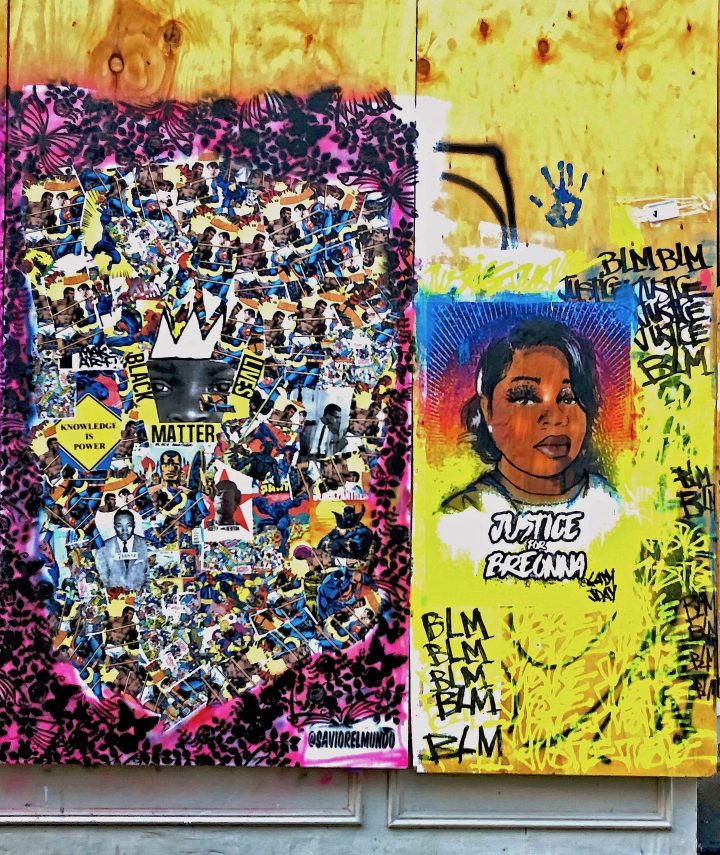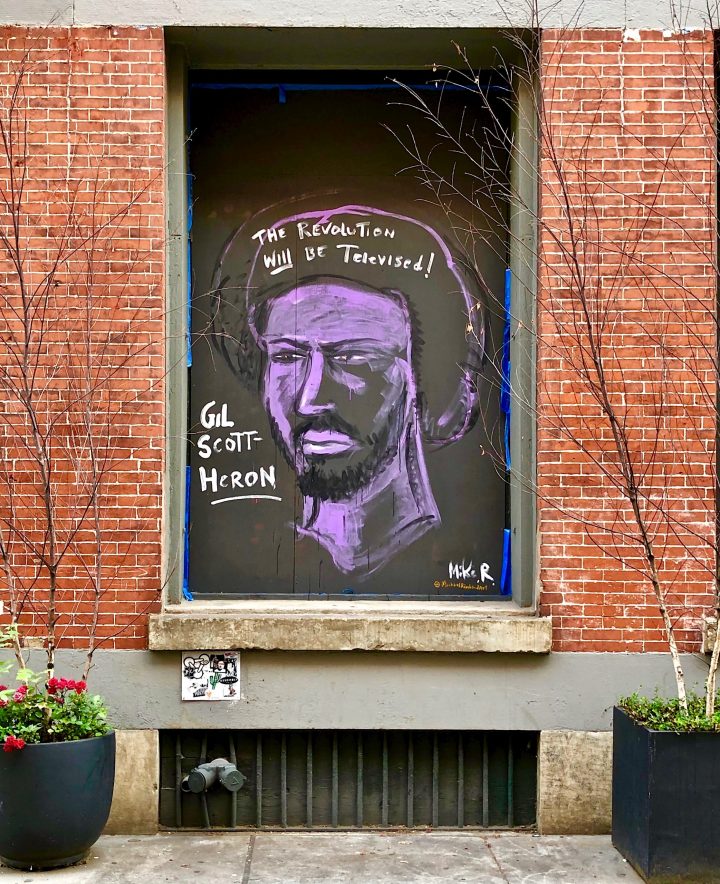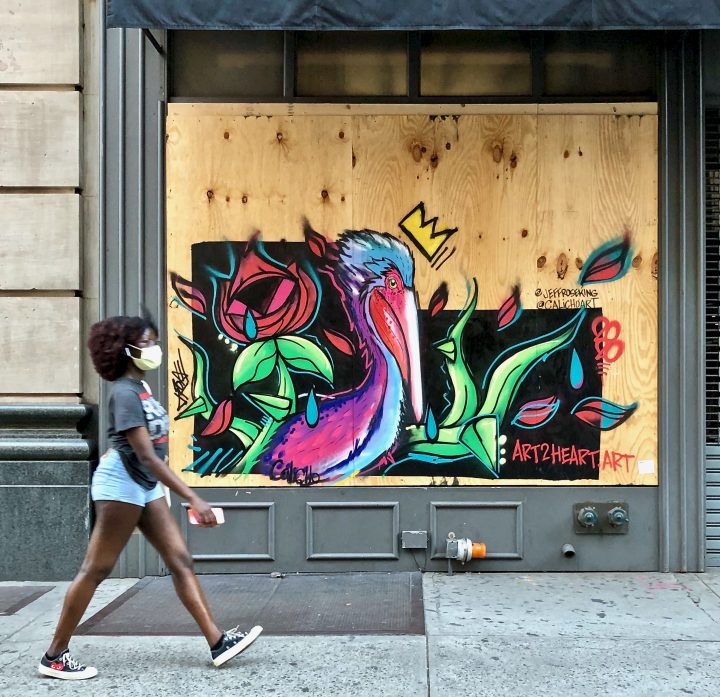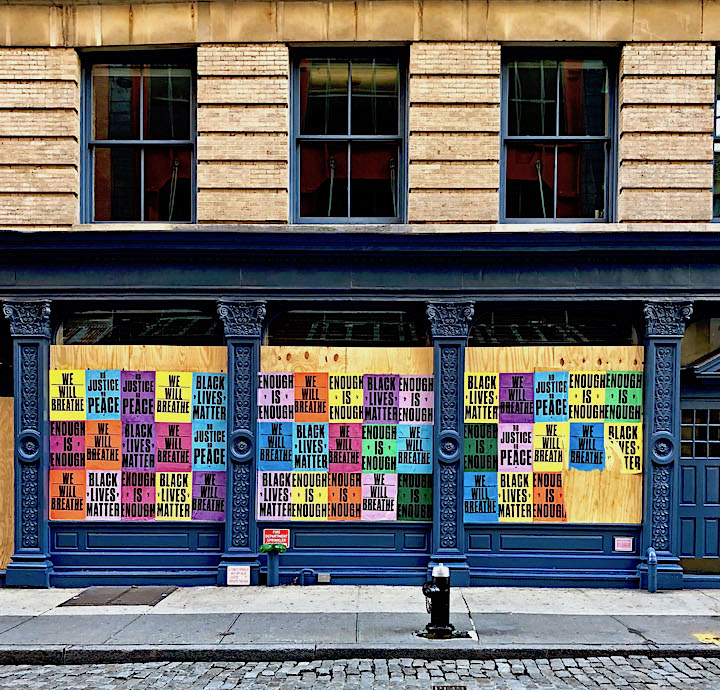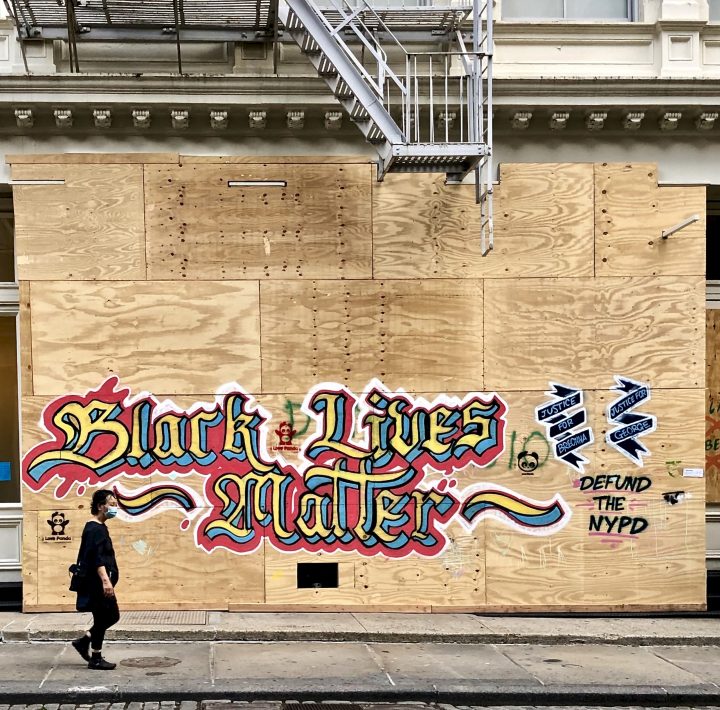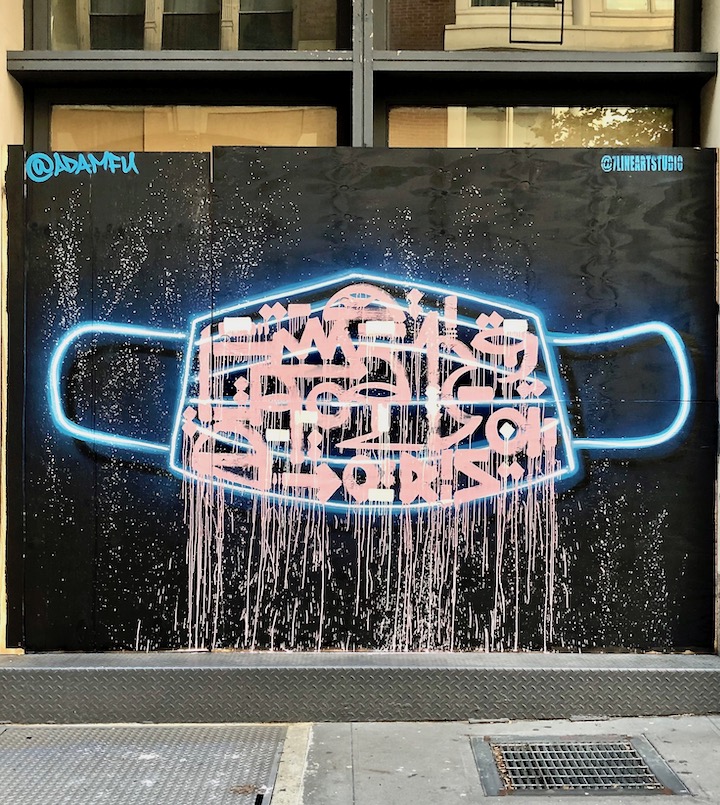
When I visited Soho last Monday, it was hardly the rich wonderland it was several weeks ago. Yet, several new pieces greeted me, and I enjoyed revisiting some of my favorite murals that have, somehow, survived. The image featured above is the work of the delightfully talented artists Adam Fu and Duel RIS. Several more images — a few captured earlier — follow:
The legendary Duel RIS

NYC-based multimedia artist Nick C. Kirk
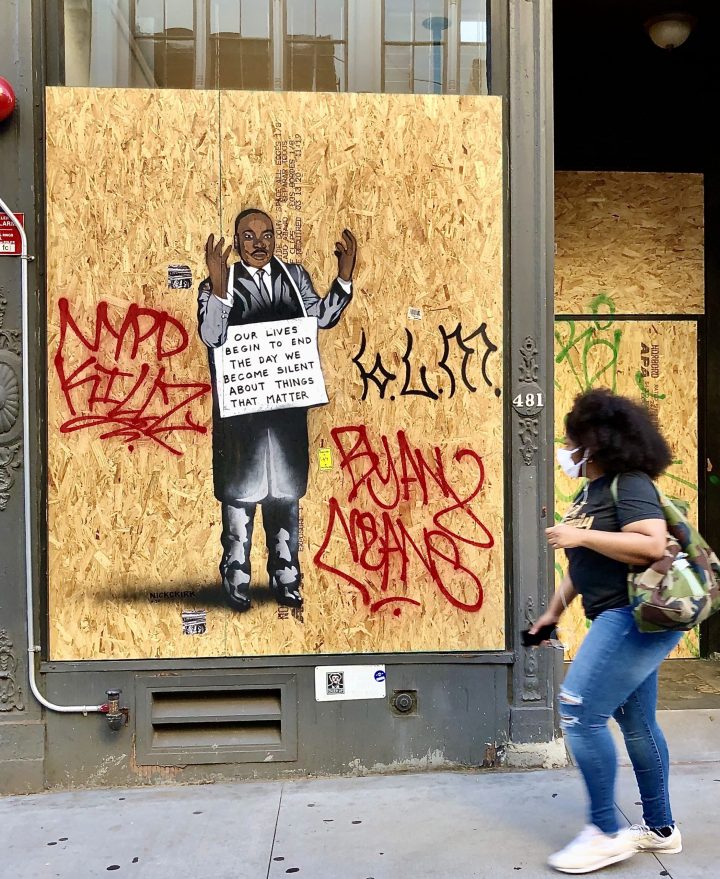
The prolific NYC graffiti pioneer Hektad — captured 6.29
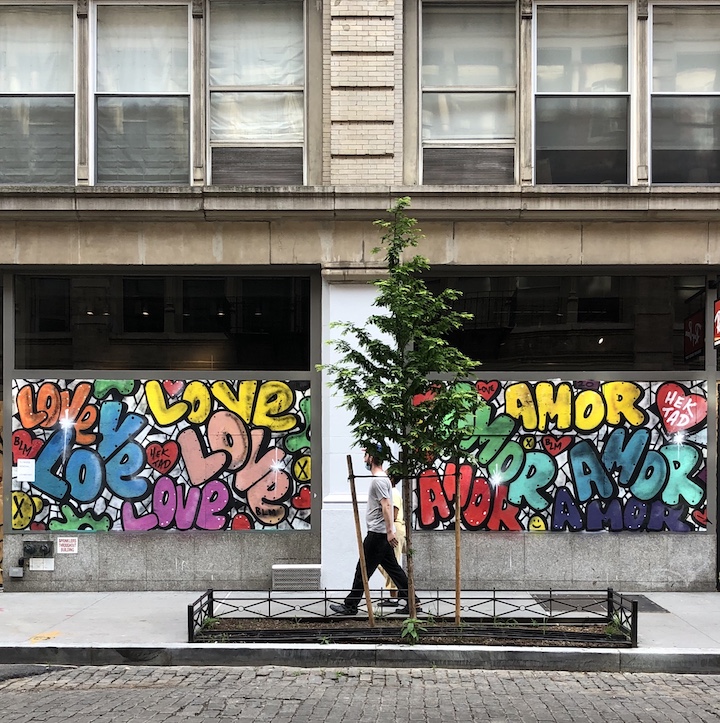
NYC-based multimedia artist Fabio Esteban
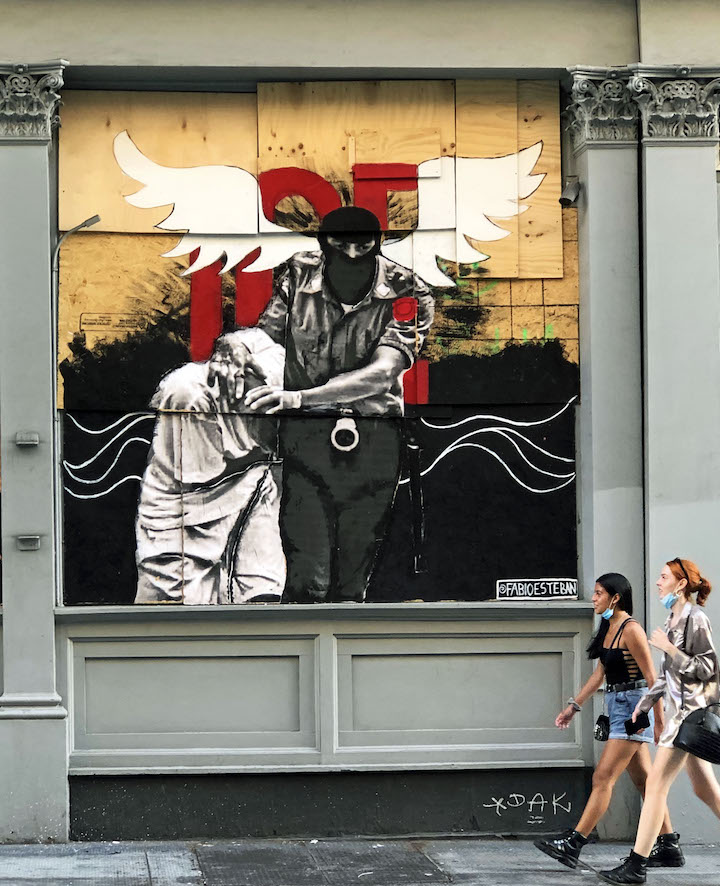
NYC-based multidisciplinary artist Ilina Mustafina
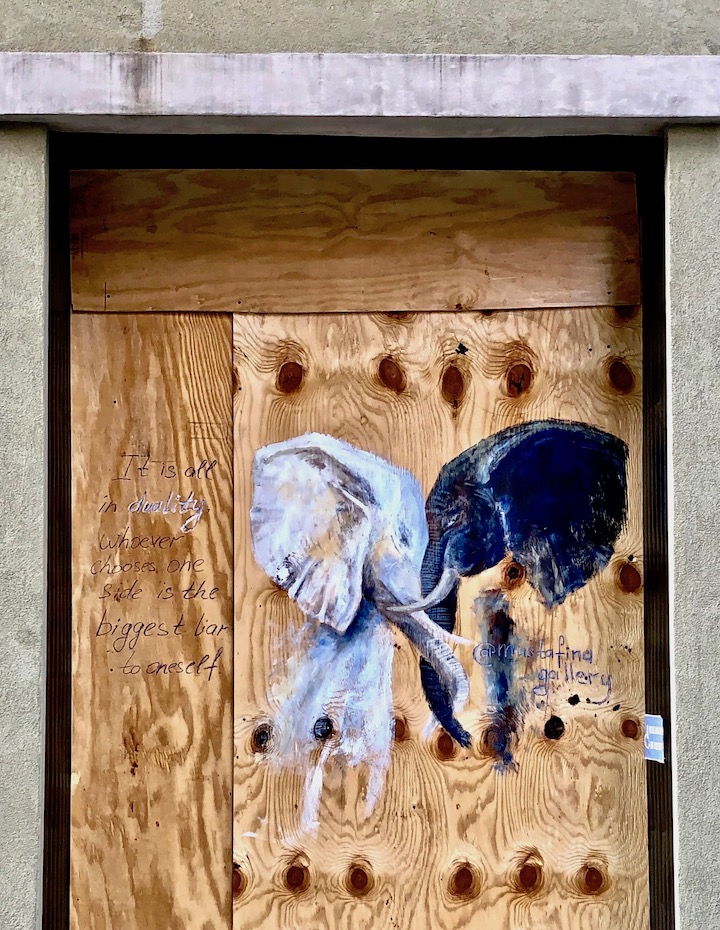
Photos by Lois Stavsky
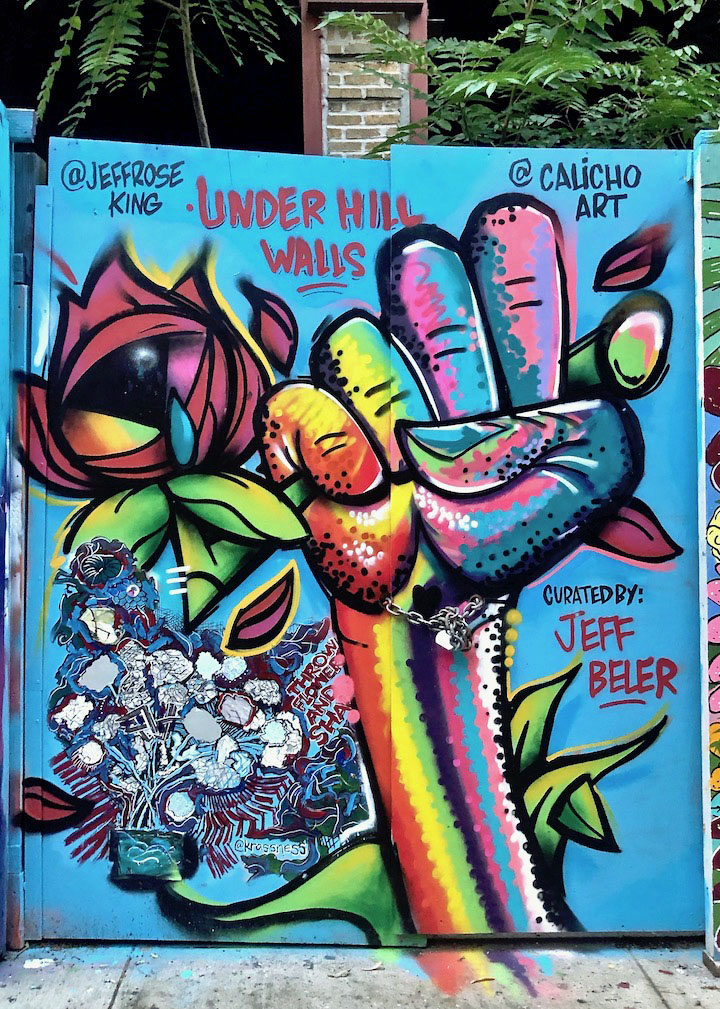
While revisiting Underhill Walls in Prospect Park, Brooklyn this past week, I was greeted by several delightfully intriguing murals that I hadn’t captured on my earlier visit in May. The image featured above was fashioned by Queens-native Jeff Rose, Colombian artist Calicho Arevalo, and Brooklyn-based krassness. Several more artworks from this model community arts-based project, curated and managed by Jeff Beler, follow:
Local artist Justin Winslow’s magical world

Gowanus-based Dylan Bauver‘s geometric Cosmos
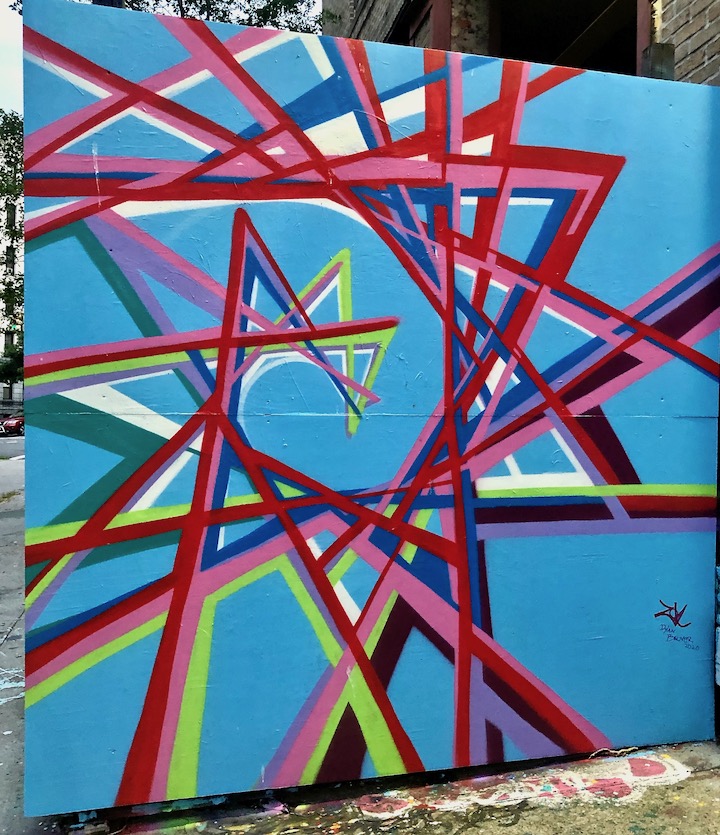
Dylon Thomas Burns offers a glimpse of heaven
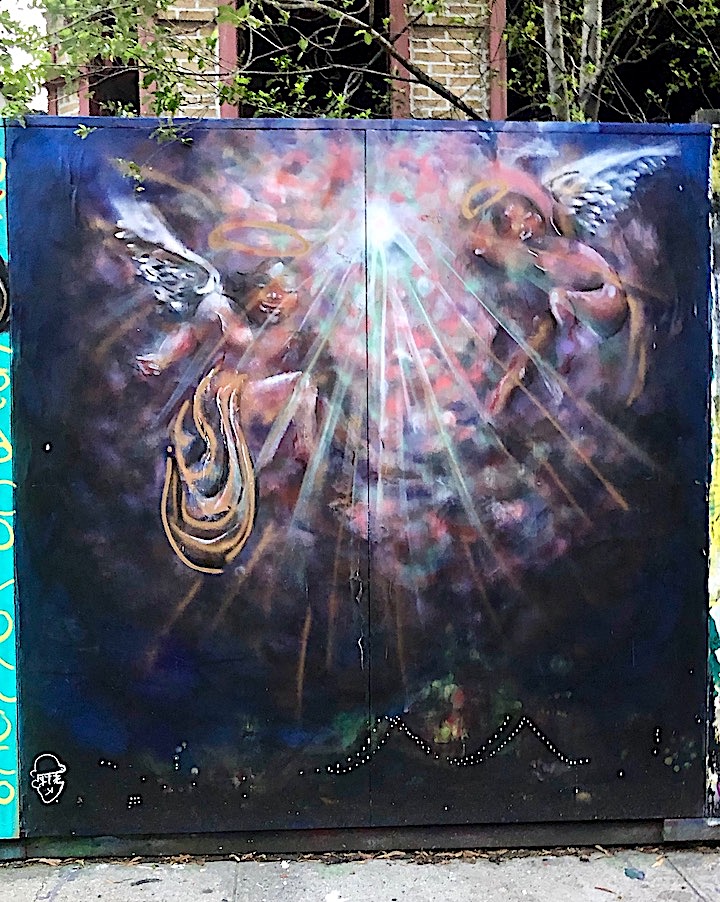
Manhattan-based Marivel Mejia pays homage to our health care workers
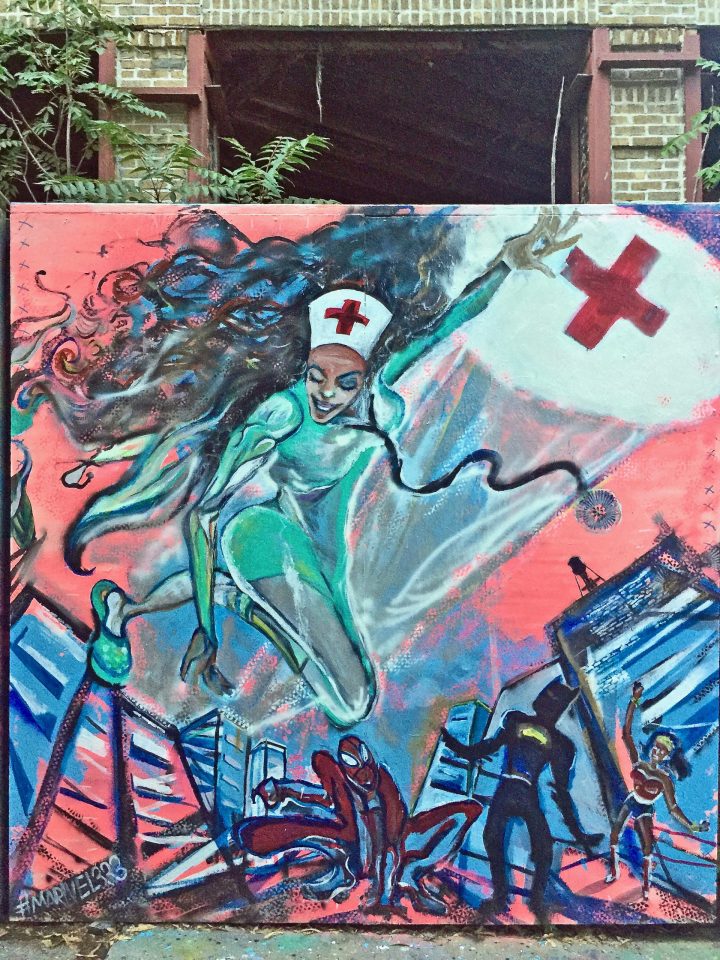
Stem YNN and Aloe Adventures take on — in comic book-style — our surreal times as we are “dodgin’ more than corona”
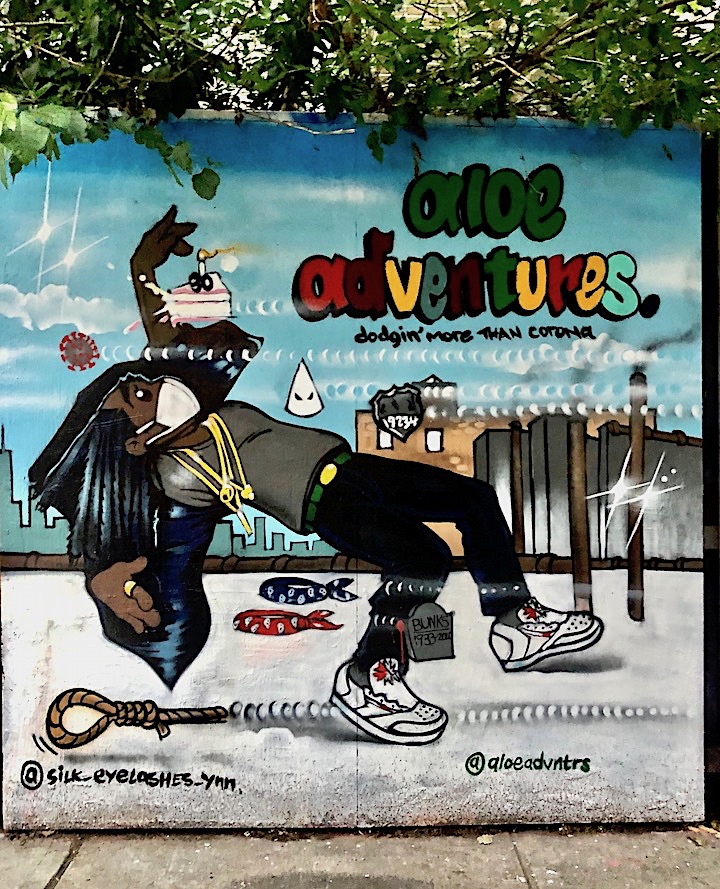
Underhill Walls is located at the corner of St. Johns Place and Underhill Avenue in Prospect Heights, Brooklyn.
Photo credits: 1 -4 & 6, Lois Stavsky and 5 Sara Ching Mozeson
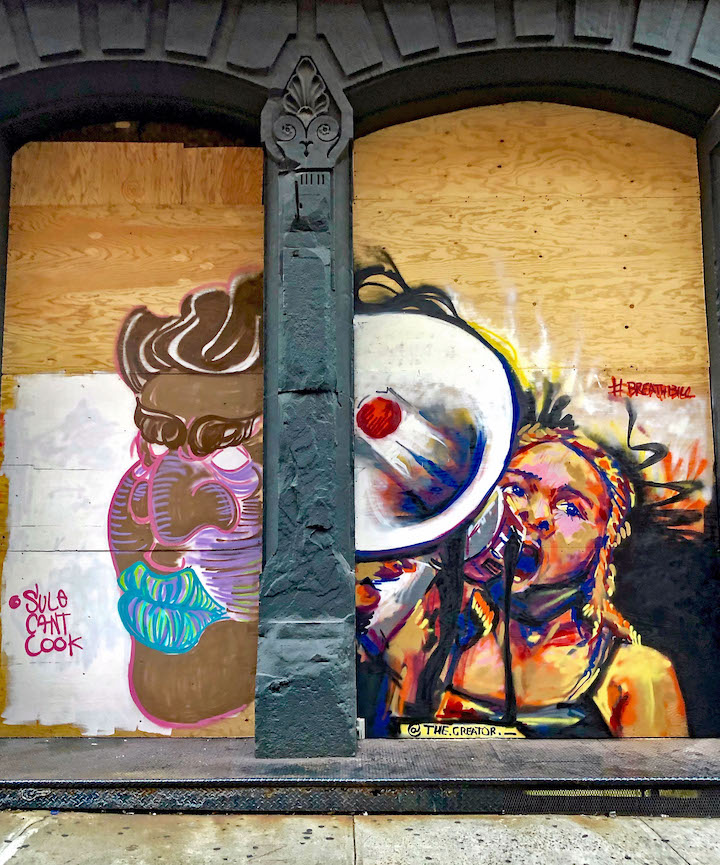
While many of the original artworks that had surfaced on the boarded-up stores in Soho are no longer on view, others continue to emerge. Featured above are works by NYC-based politically-conscious artist Sule and Brooklyn-based artist Manuel Alejandro Pulla. What follows are several more artworks I came upon earlier this week, along with a few captured within the past month.
Also by Sule, “My Color Is Not a Crime”
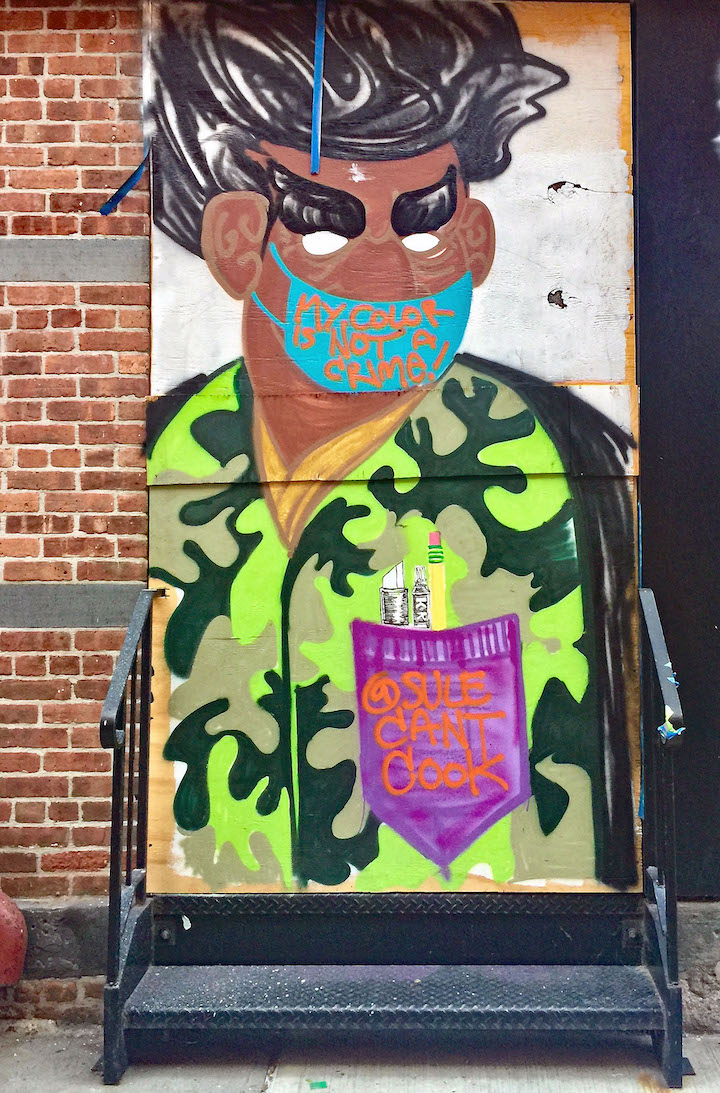
Artist/activist Amir Diop in collaboration with Eyes That Love Art, “Take Me to a Place Where I Won’t Be Judged by My Weight, I Won’t Be Labeled as a Nerd– Where Black Lives Matter”
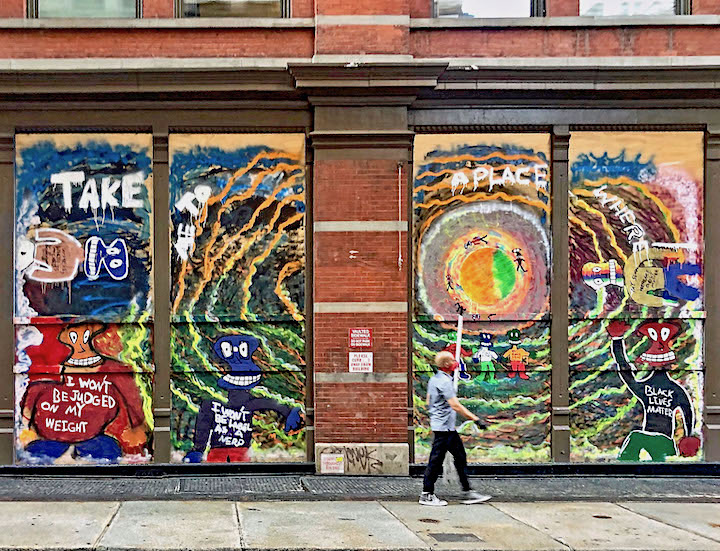
NYC-based multidisciplinary artist DVNNY, “Let Us Live,” — a plea from the transgender community
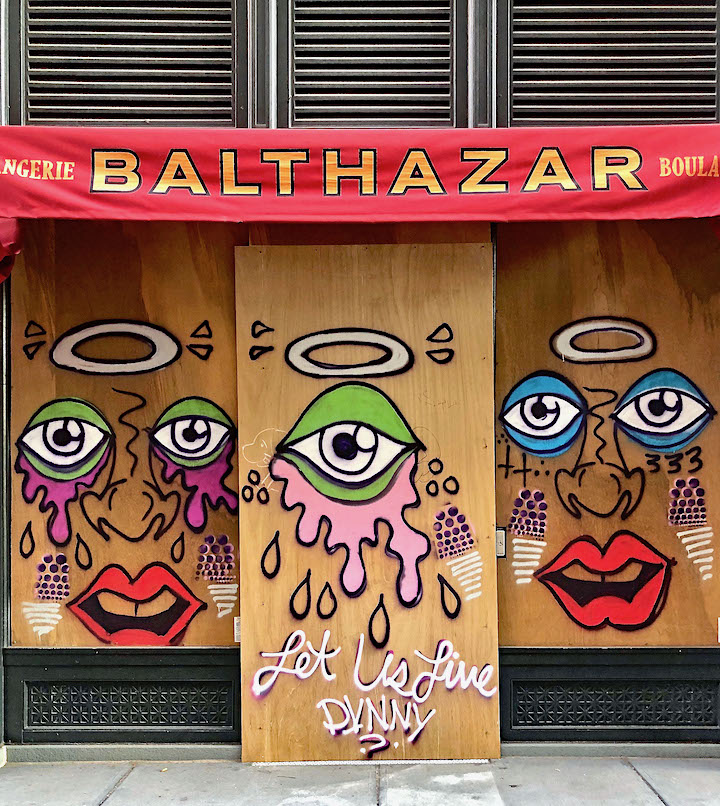
Jordanian-American multidisciplinary artist Ridikkuluz pays homage to the 30–year-old Egyptian LGBTQ activist Sarah Hegazi — arrested and tortured in Cairo for raising the LGBT flag at a concert — who died last month by suicide while living in exile in Canada — to the left of LEXXX‘s plea to “Free the Ninos”
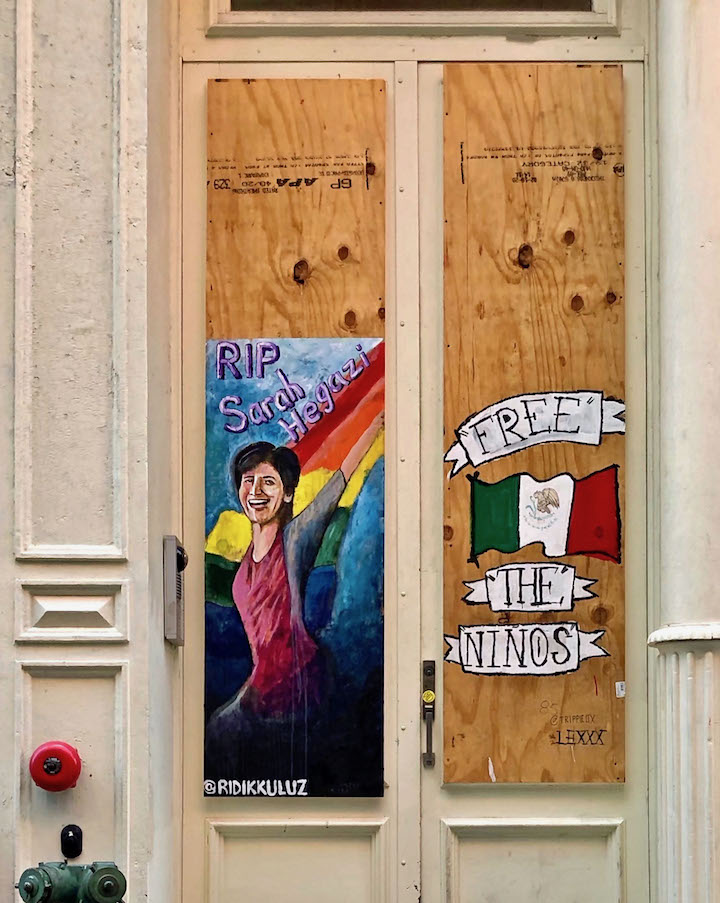
Isabelle with Vincent Van Gogh quote: “Art is to Console Those Who Are Broken by Life”
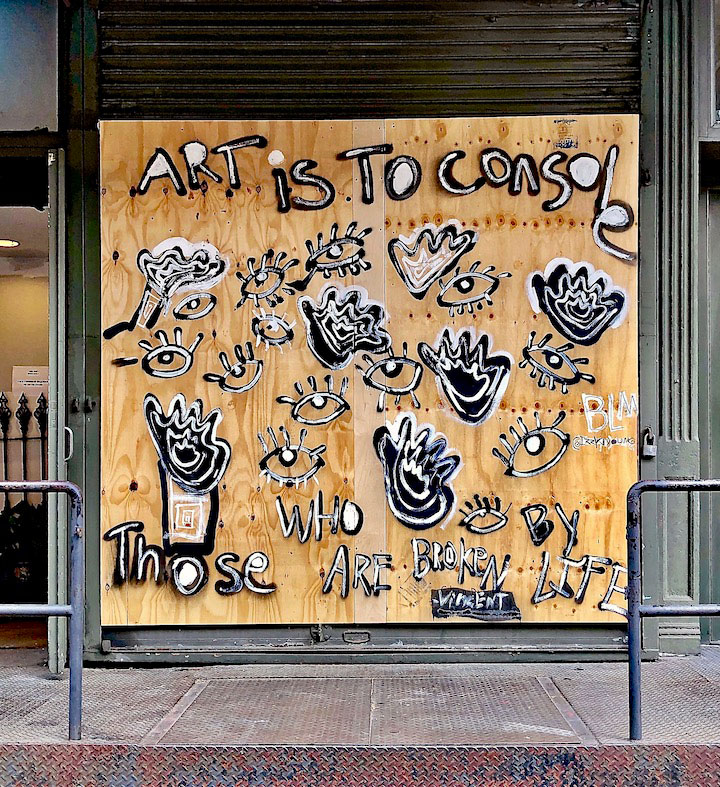
Brooklyn-based Czech artist Irena Kenny, “We are the change that we seek.”
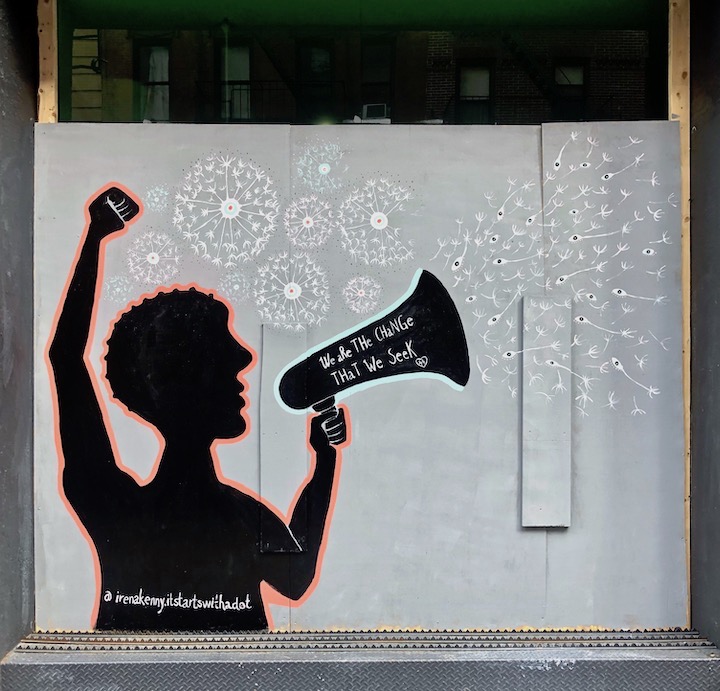
To be continued next week!
Photo credits: 1, 3 – 7 Lois Stavsky; 2 Sara Ching Mozeson
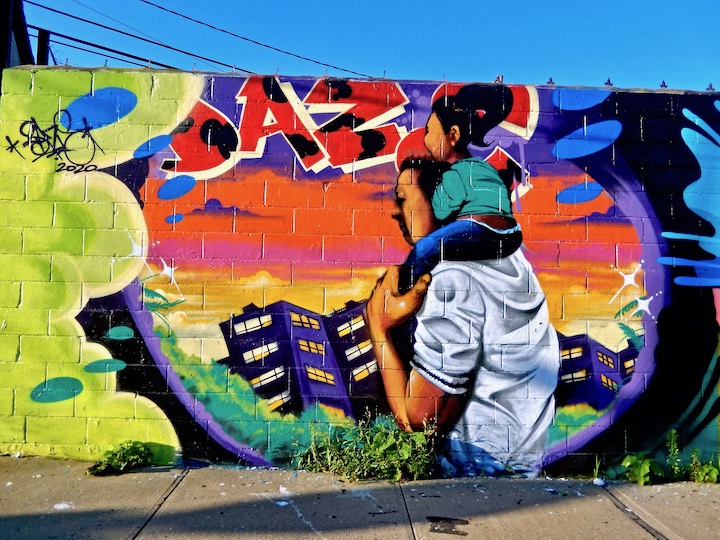
For over a decade Welling Court and its surrounding blocks in Astoria, Queens have been a mecca of street art and graffiti, engaging a widely diverse group of artists, the local community, as well as the the general public. On our recent visit to Astoria, we were delighted to discover several new murals — curated by Alison C. Wallis — that have surfaced in these trying times on the walls of one of our favorite street art destinations. The image featured above was fashioned by the legendary Chris “Daze” Ellis. Several more murals — painted over the past few weeks — follow:
Bronx-bred El Souls
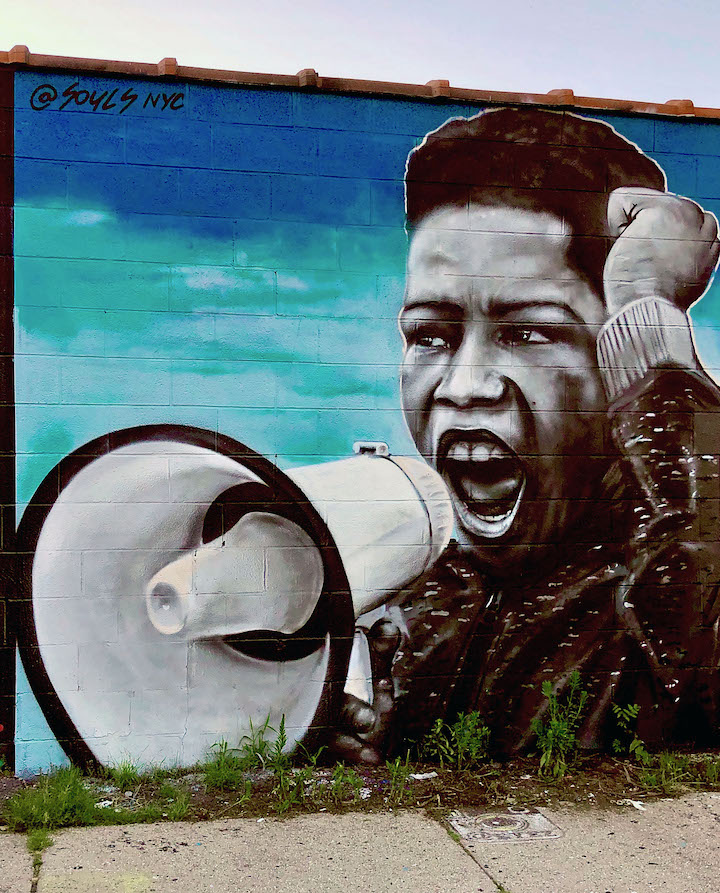
Lady Pink‘s tribute to George Floyd, Breonna Taylor and many more whose lives should have never been cut short
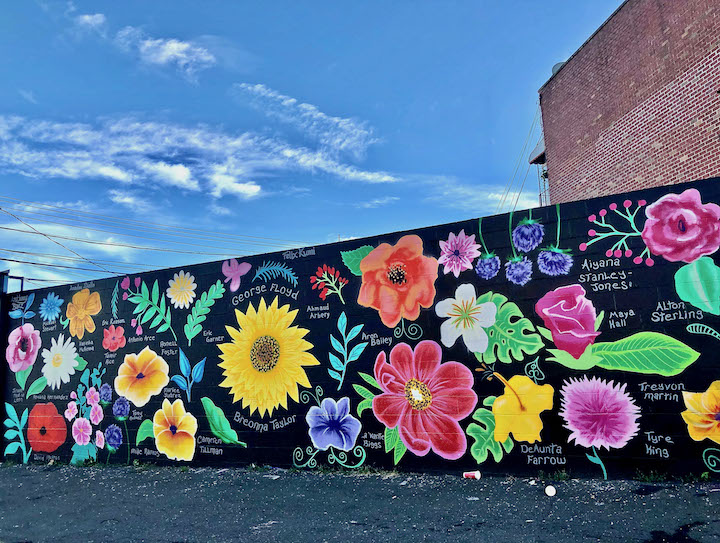
Greg Lamarche aka SP ONE, “Lift Every Voice”
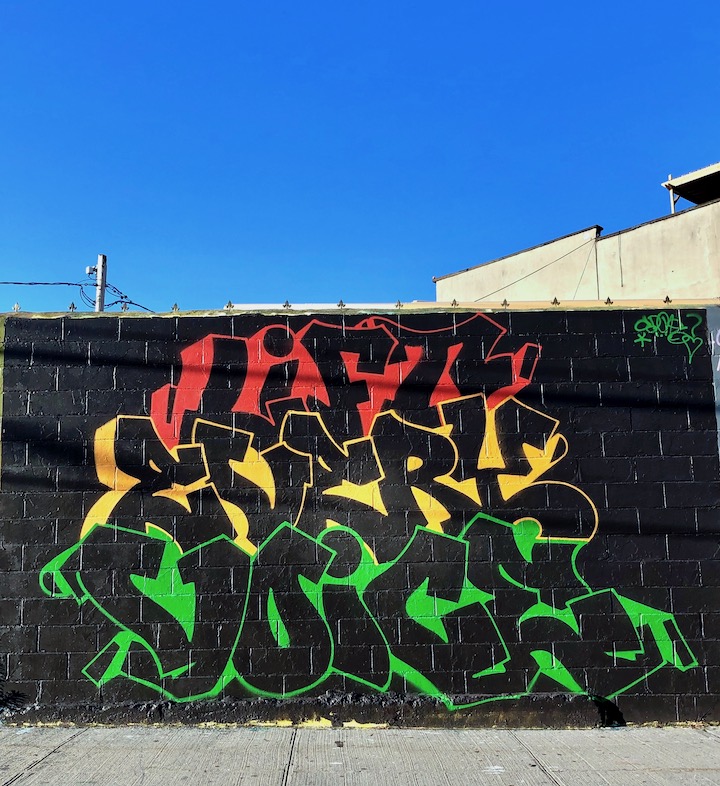
Fumero, “The Glariator” with his name in flames
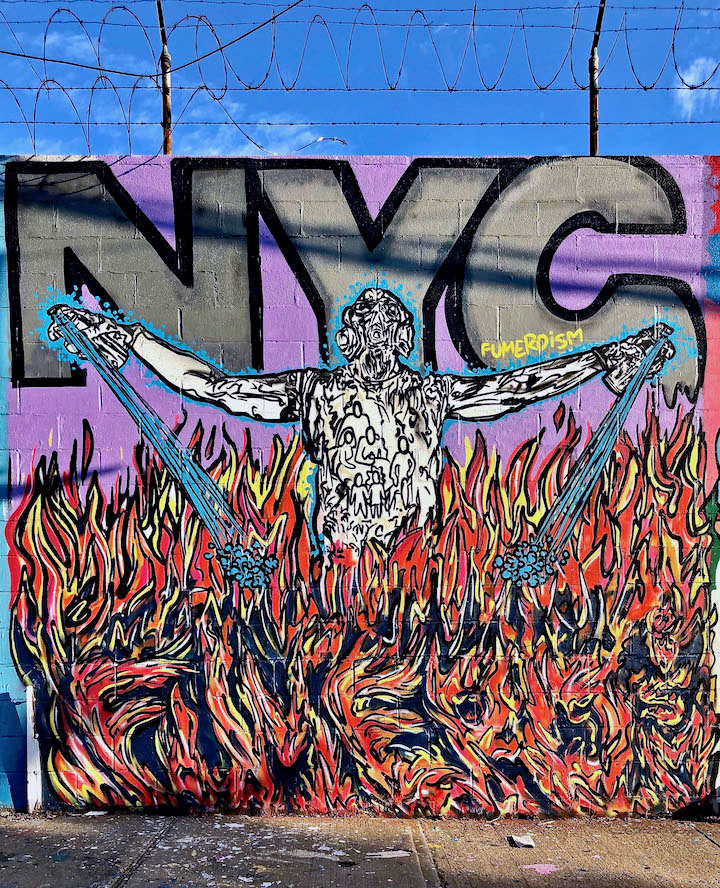
Bronx-based BG 183, Tats Cru
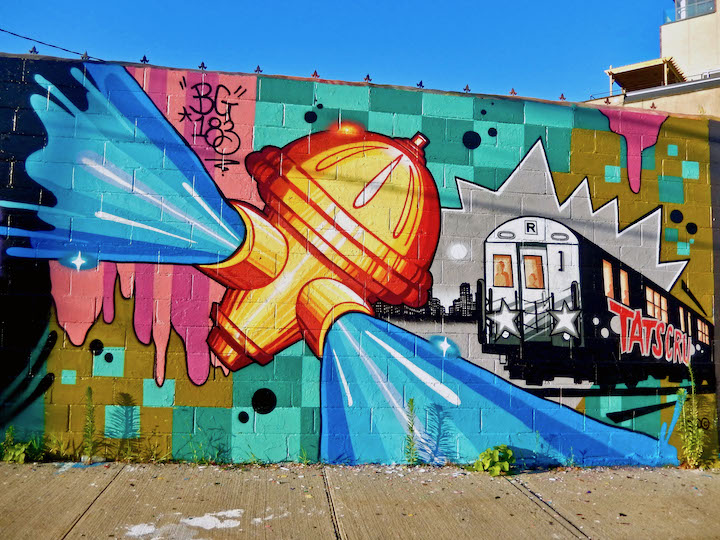
Queen Andrea, Love Always Wins
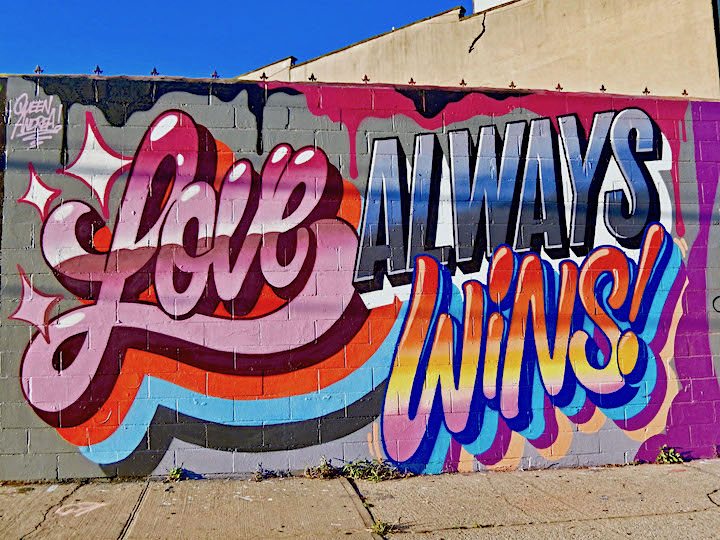
John “Crash” Matos and Joe Iurato with a message of LOVE
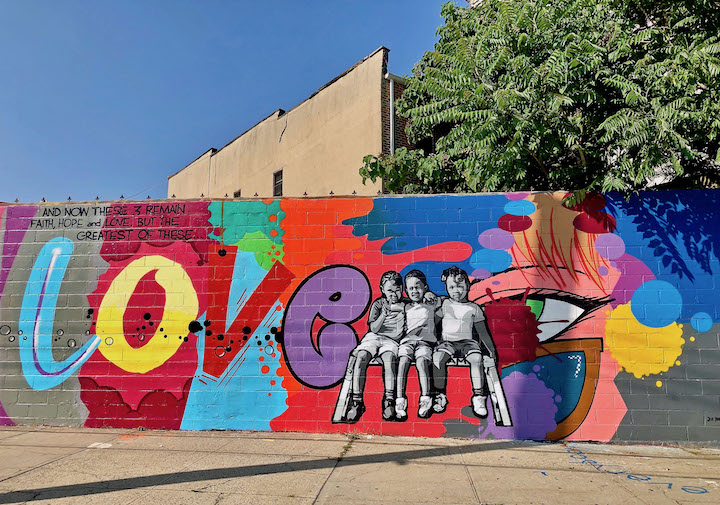
Also among the new works is a mural fashioned by the legendary John Fekner, to be captured when the sun cooperates!
Photo credits: 1, 6 & 7 Sara Ching Mozeson; 2 – 5 & 8 Lois Stavsky
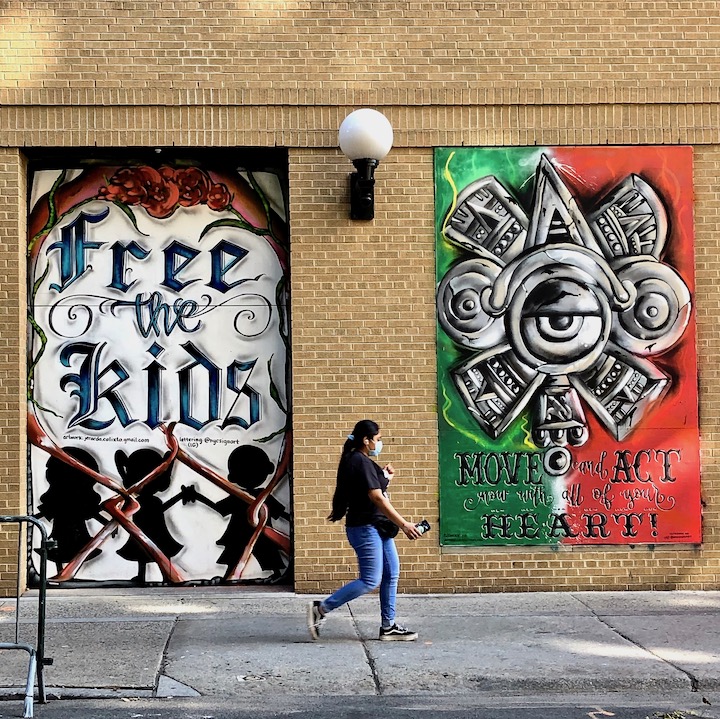
While many of the boards in Soho continue to be dismantled, the ones that remain continue to intrigue. And, happily, new ones surface — largely by artists who generally work in their studios — addressing a range of issues from systemic racism to transphobia. The socially-driven artworks featured above were fashioned a few weeks back by Brooklyn-based artist Jerardo Calixto in collaboration with Sofi ✍ Signs. Several more images captured earlier this week — several in progress — follow:
NYC-based Fabio Esteban with a message
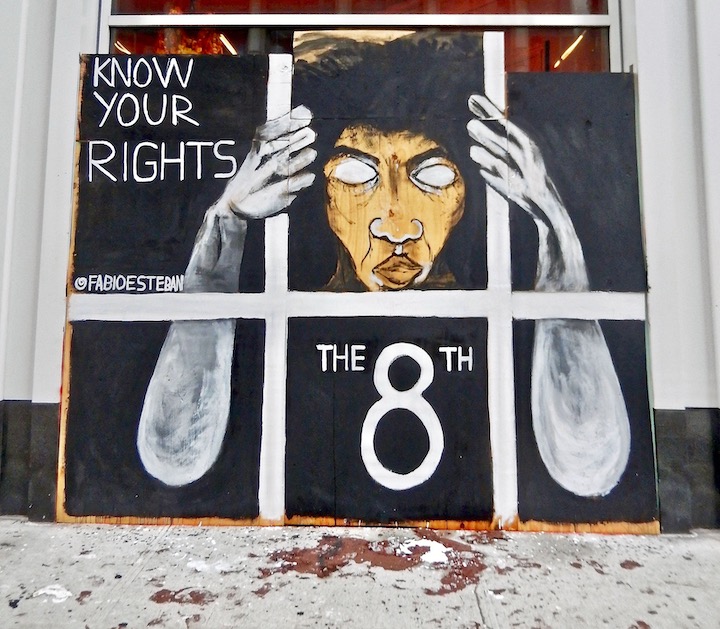
NYC-based Brendan T Mcnally takes a brief break from “Break Free” in progress (check out Brendan’s Instagram to view the now completed mural and its moving backstory)
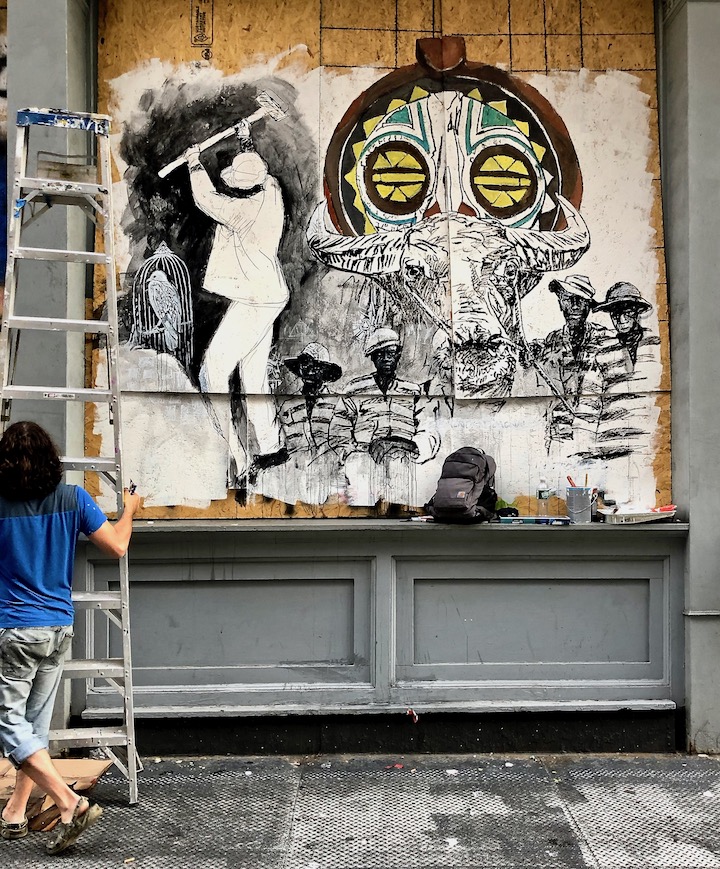
NYC-based, Moscow native Sofia Granovskaia aka Dr Antic to the right of artist/activist Amir Diop — with an important request and reproach re: his missing artwork
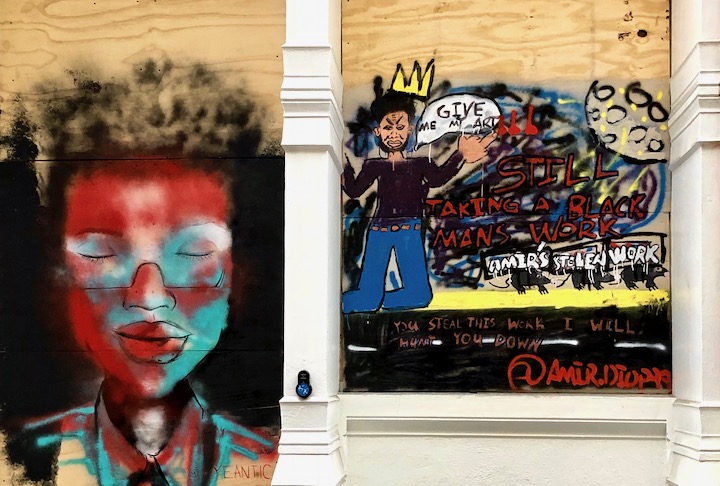
Multidisciplinary artist Matthew Mazur — dedicated to “our Black Trans Brothers and Sisters who were taken from us too soon.”
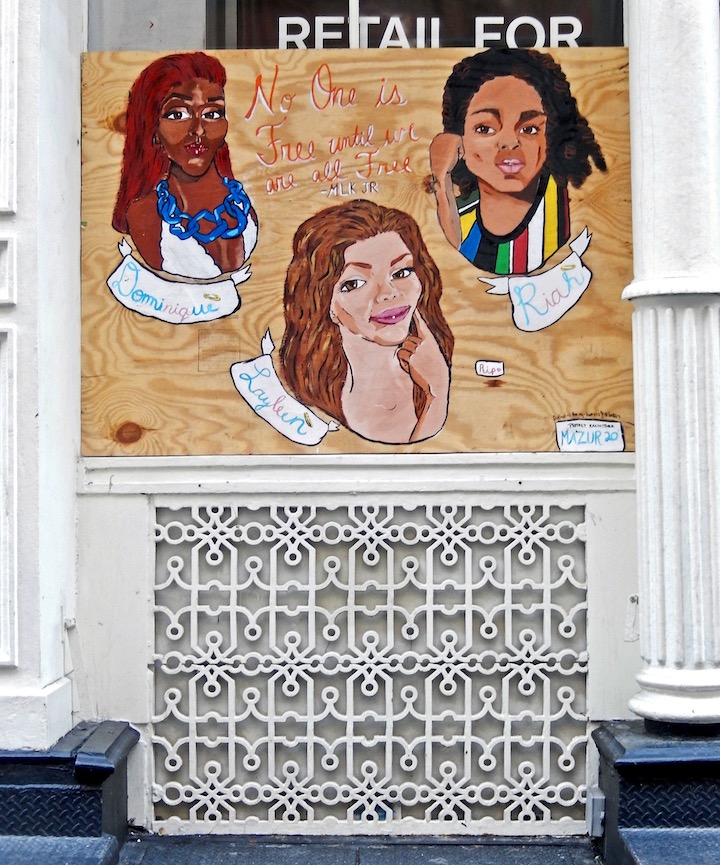
Native Belarus artist Mitya Pisliak at work
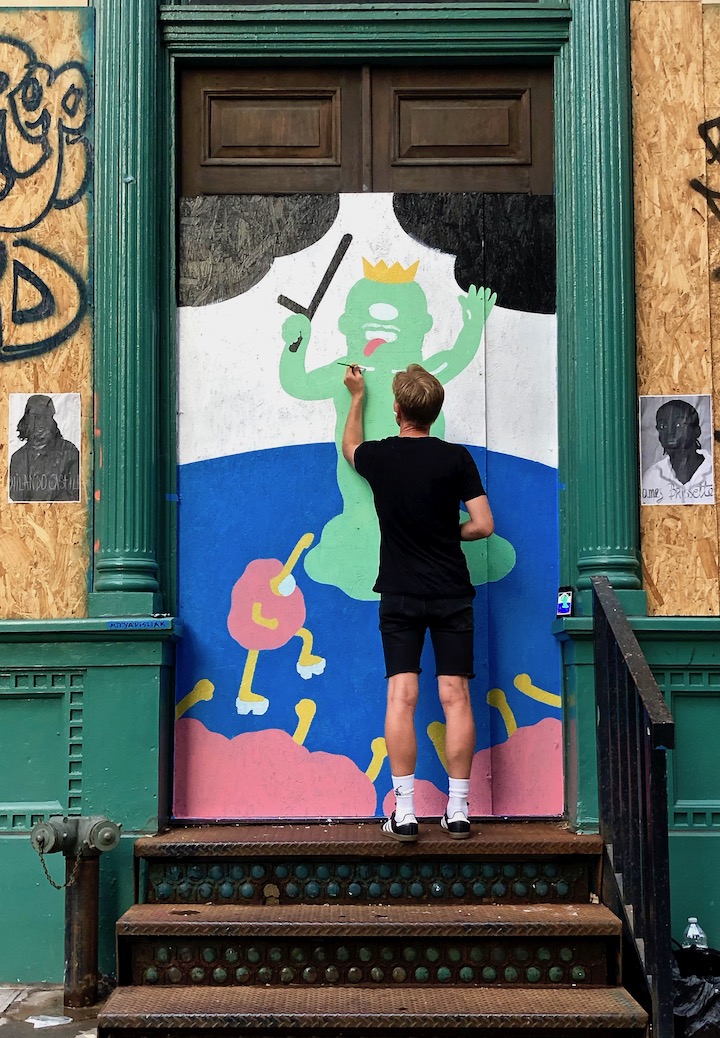
Brooklyn-based, Czechoslovak-born Kamila Zmrzla Otcasek
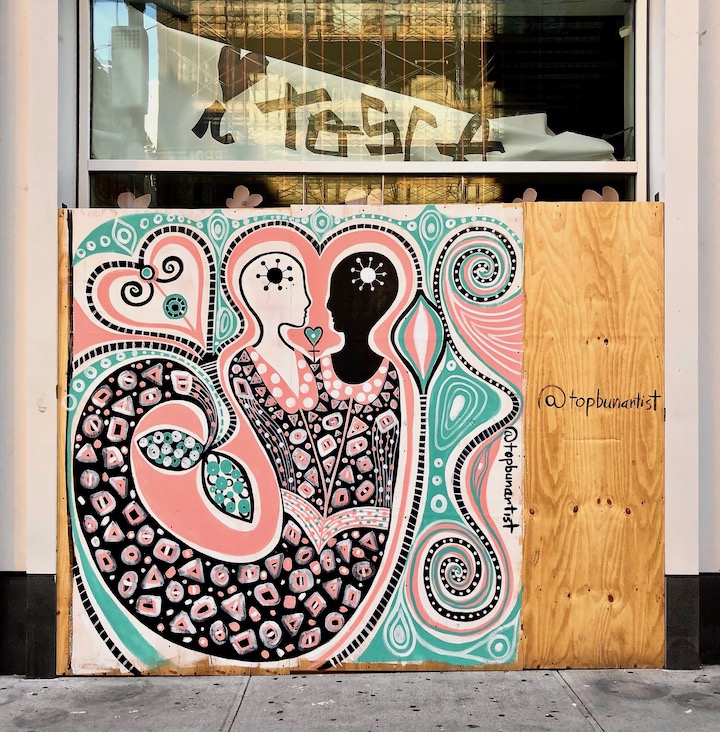
On racism — signed Scott Woods
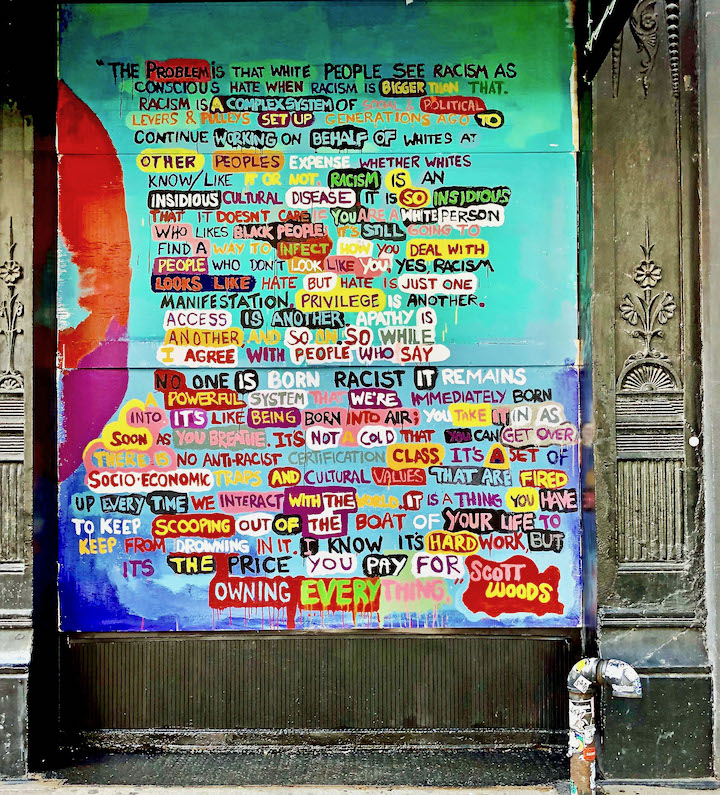
To be continued next week!
Photo credits: 1, 3, 4, 6-8 Lois Stavsky; 2 & 5 Sara Ching Mozeson
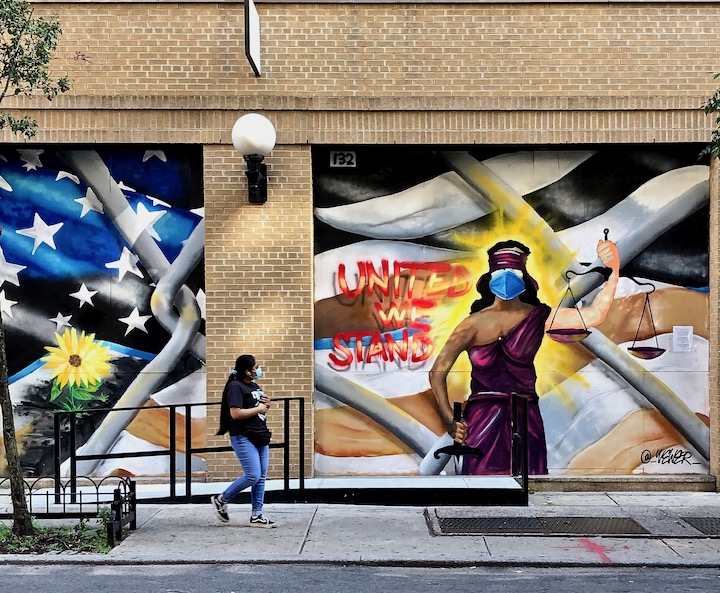
Although dozens of boards that have served as canvases for a diverse range of artworks are no longer part of Soho’s visual landscape, the neighborhood remains my current favorite destination for street art. The image featured above was created by the talented, NYC-based writer and painter Gerry Vewer. Several more images — some discovered earlier this week and others captured within the last month — follow:
West Chester, PA-born, NYC-based Maeve Cahill’s homage to Black inventors, who’ve been largely “written out of history”
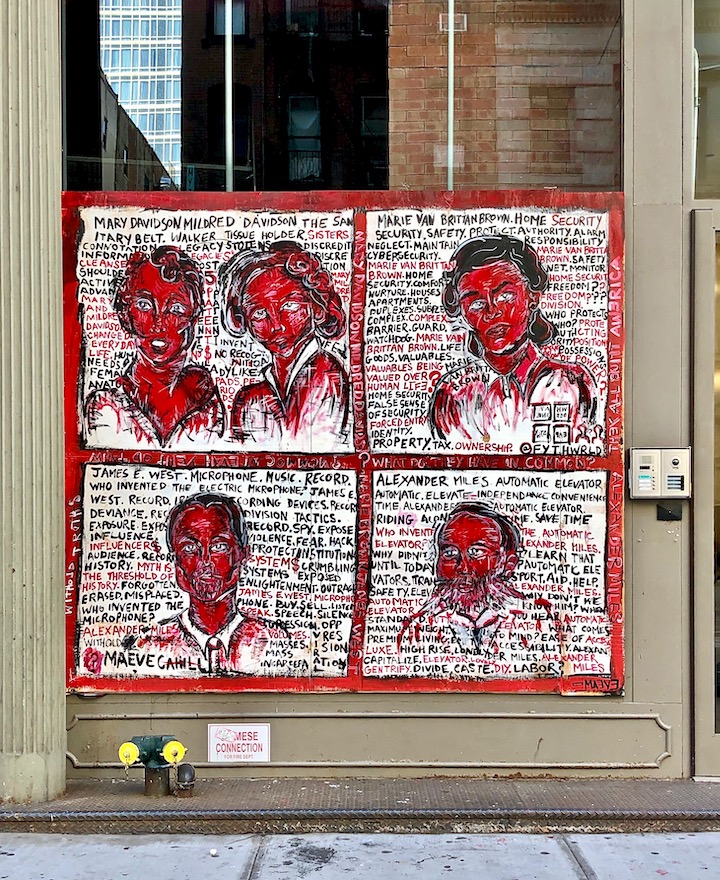
Documentarian Middlemen Doc and NY-based filmmaker and multidisciplinary artist Rochelle Leanne to the left of the widely-posted “Black Lives Matter” image
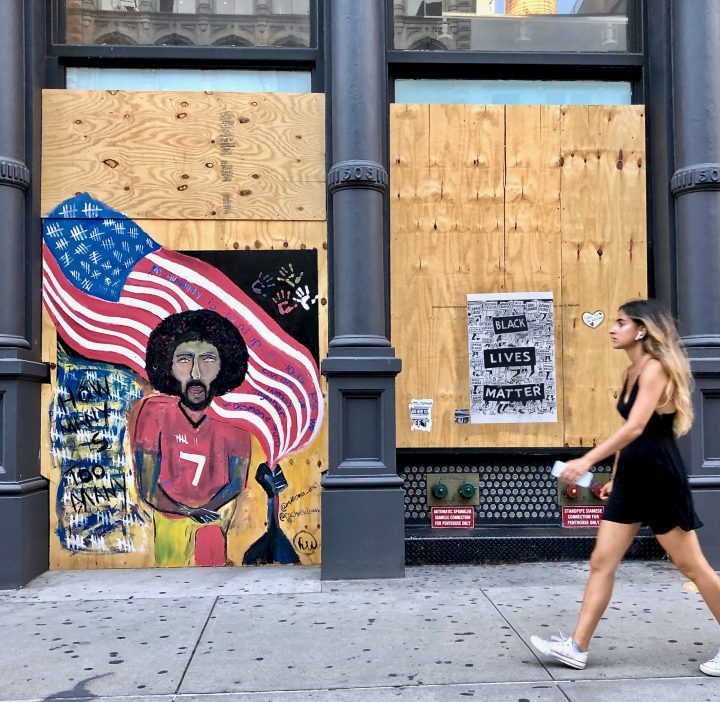
Artist and self-described cosmic anthropologist Loren Crea Abbate to the left of multidisciplinary artist Beatriz Ramos
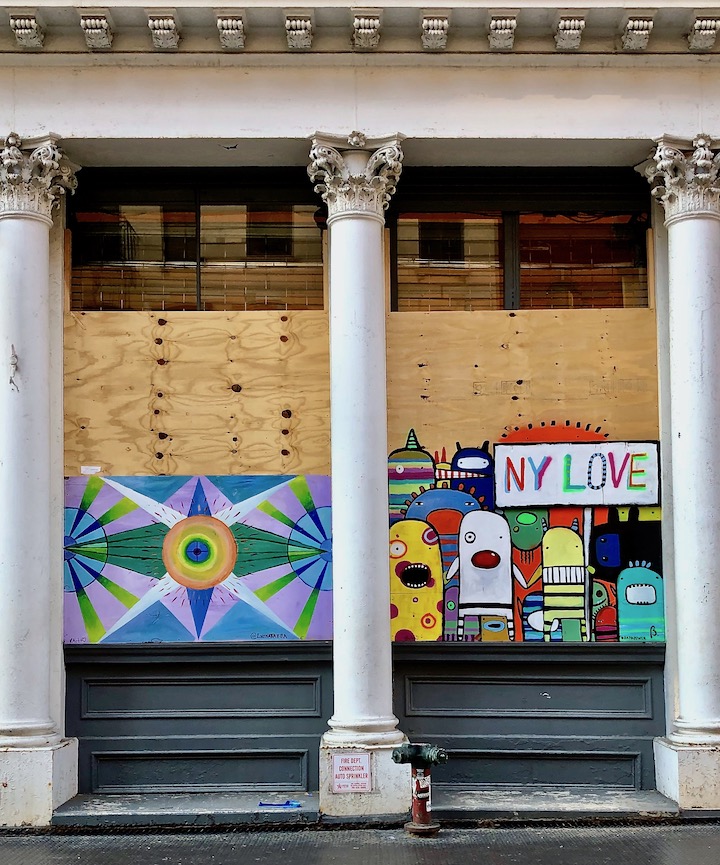
Multidisciplinary artist and designer K O FF EE
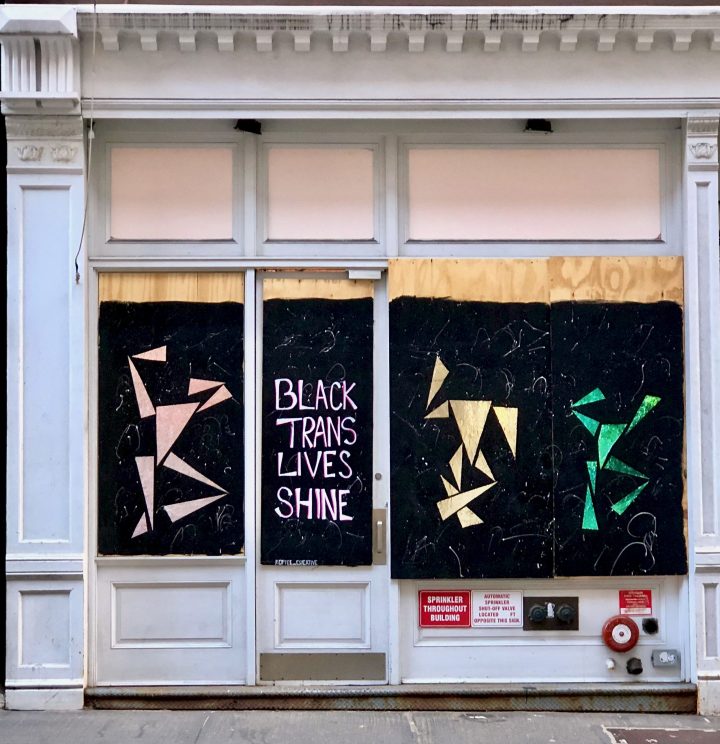
Visual artist and poet Android Oi in collaboration with Brooklyn-based MaryKathryn Medlock — to the right of NYC-based UNLOK
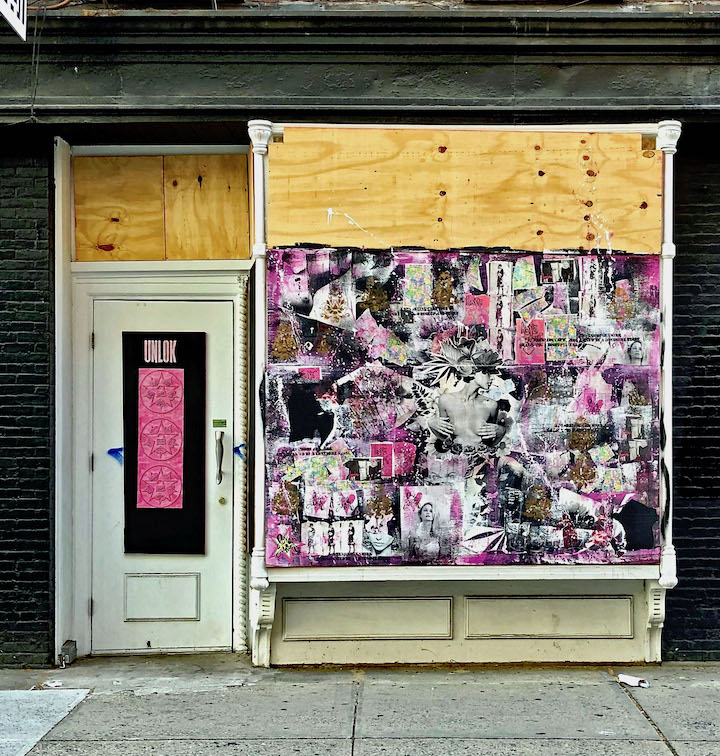
To be continued next week!
Photos by Lois Stavsky
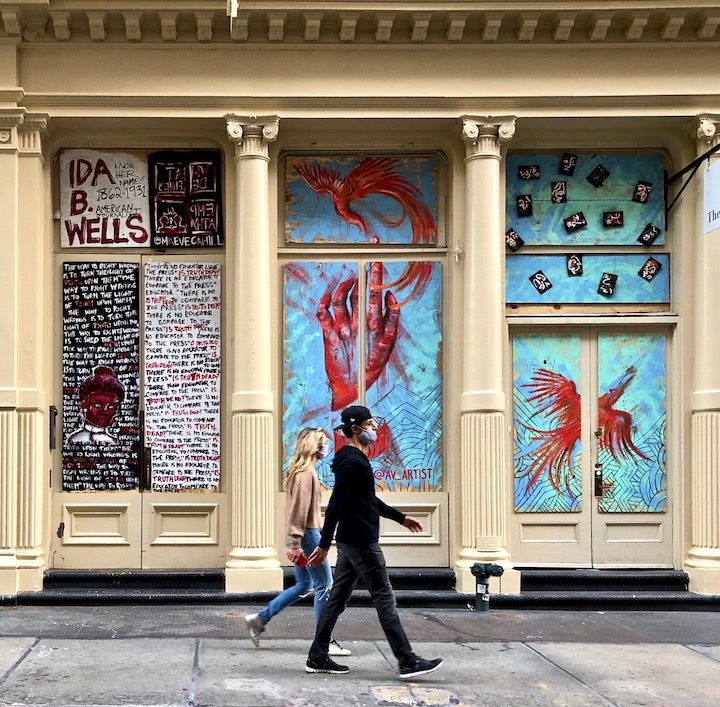
From the playful to the political, the artworks surfacing daily on Soho’s boarded-up doors and windows delight and provoke. Featured above — in the second of our series documenting Soho’s open-air museum — is Maeve Cahill‘s tribute to the late African-American journalist Ida B. Wells, alongside alluring images by an artist identified as A V. Several more artworks captured earlier this week follow:
NYC-based Nick C. Kirk, stencil of civil rights activist and football quarterback, Colin Kaepernick
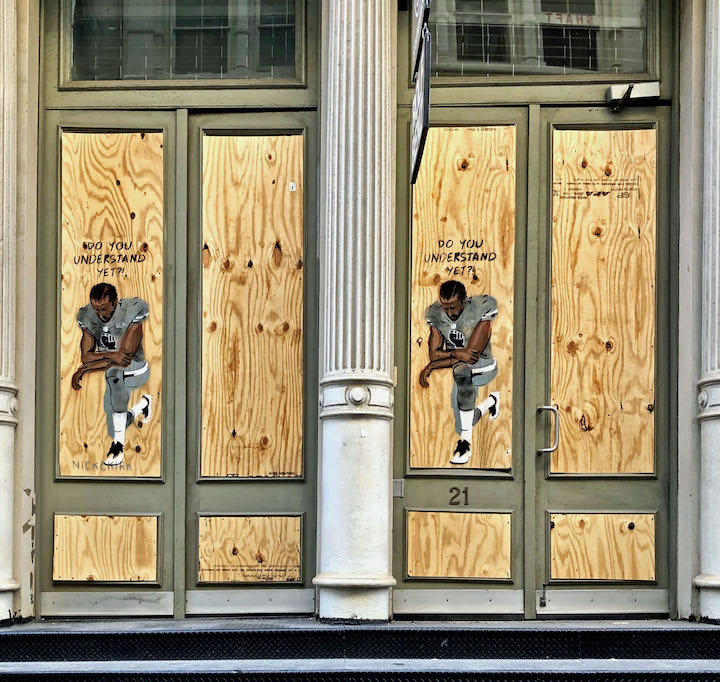
NYC-based Urban Russian Doll, Portrait of Breonna Taylor, the black emergency medical technician who had been shot to death in her Louisville, Kentucky home
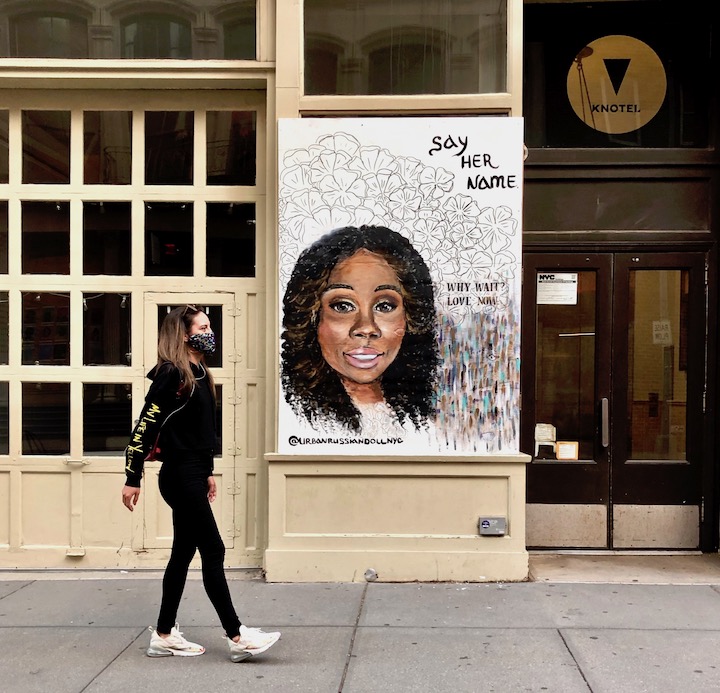
NYC-based Hektad
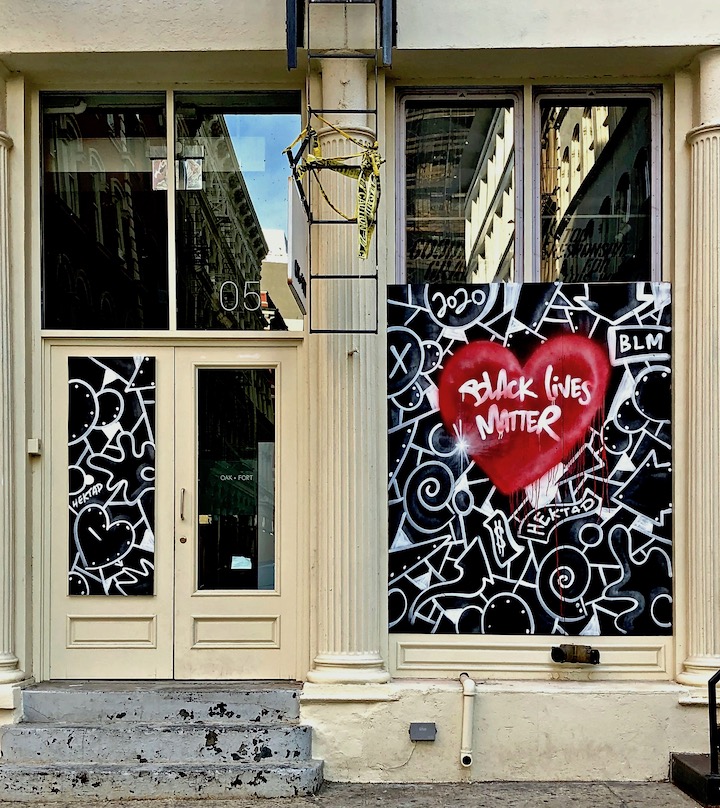
Athens, Greece-born, NYC-based Lydia Venieri, “Say Their Names,” Portraits of African-Americans murdered by the police
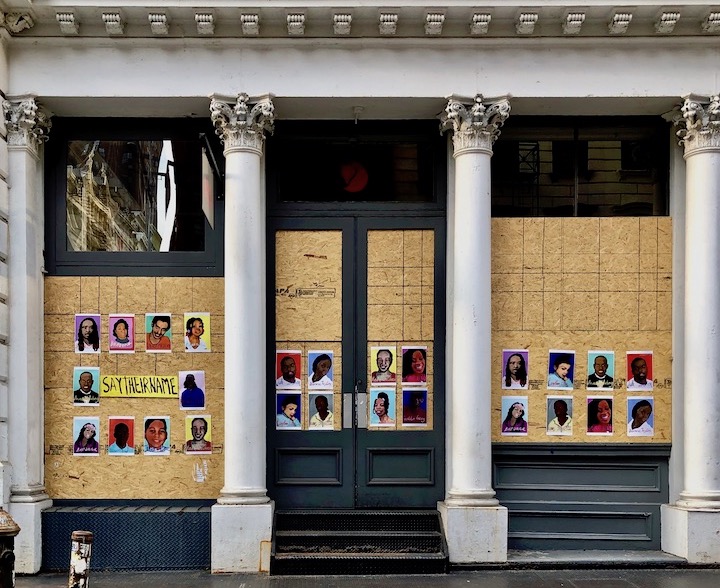
NYC-based artists Tiger Mackie (L.) and Beelzebaby (R.)
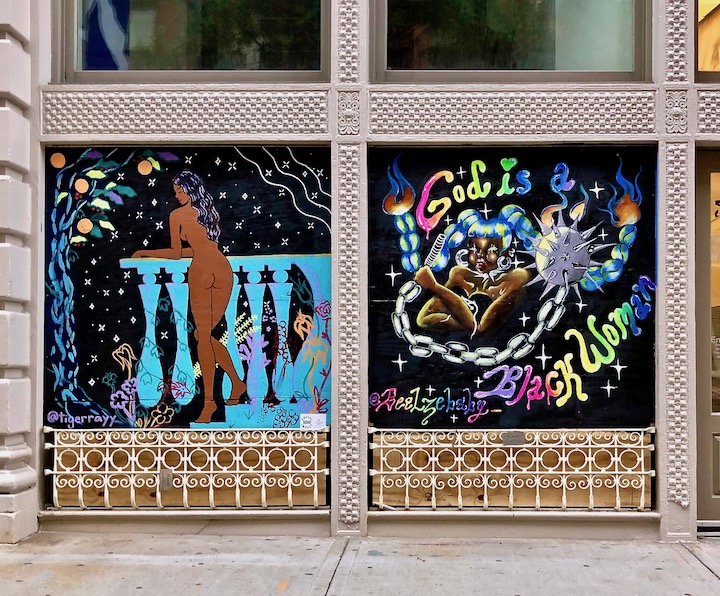
Newark, NJ-based Goomba at work

Photo credits: 1-6 Lois Stavsky and 7 Ana Candelaria
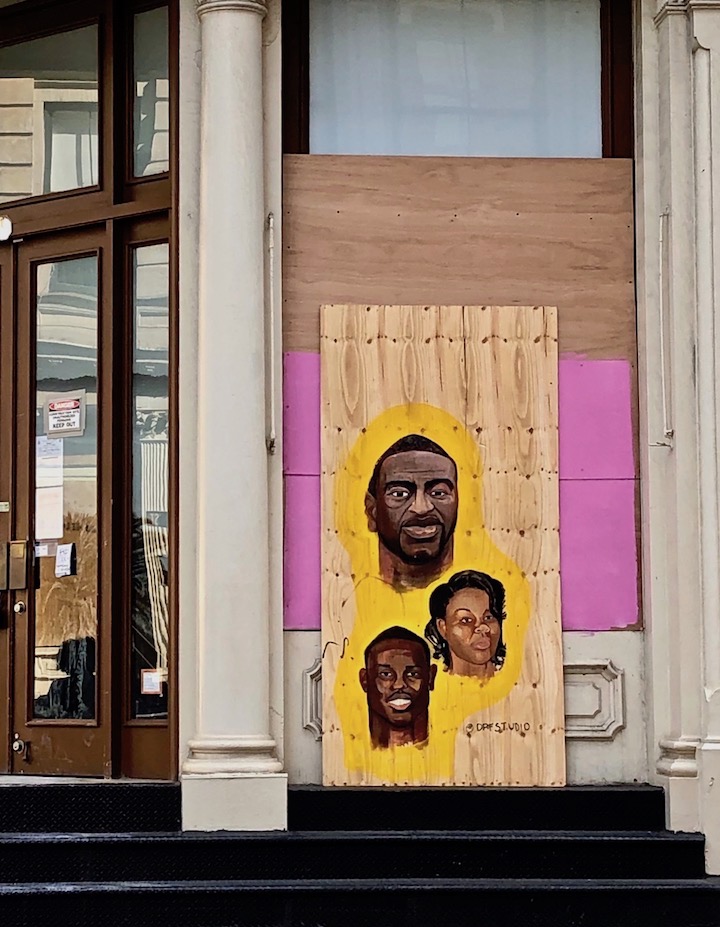
Soho’s boarded-up windows and doors now host a wide range of varied artworks. While combing the streets this past Monday, I came upon works by several artists new to me, as well as by those familiar to all of us street art aficionados. The image featured above is the work of Brooklyn-based Dena Paige-Fischer. A small sampling of more images that have transformed the blocks in the vicinity of Grand and Mercer Streets into an open-air museum follow:
Miami-native, NYC-based SacSix
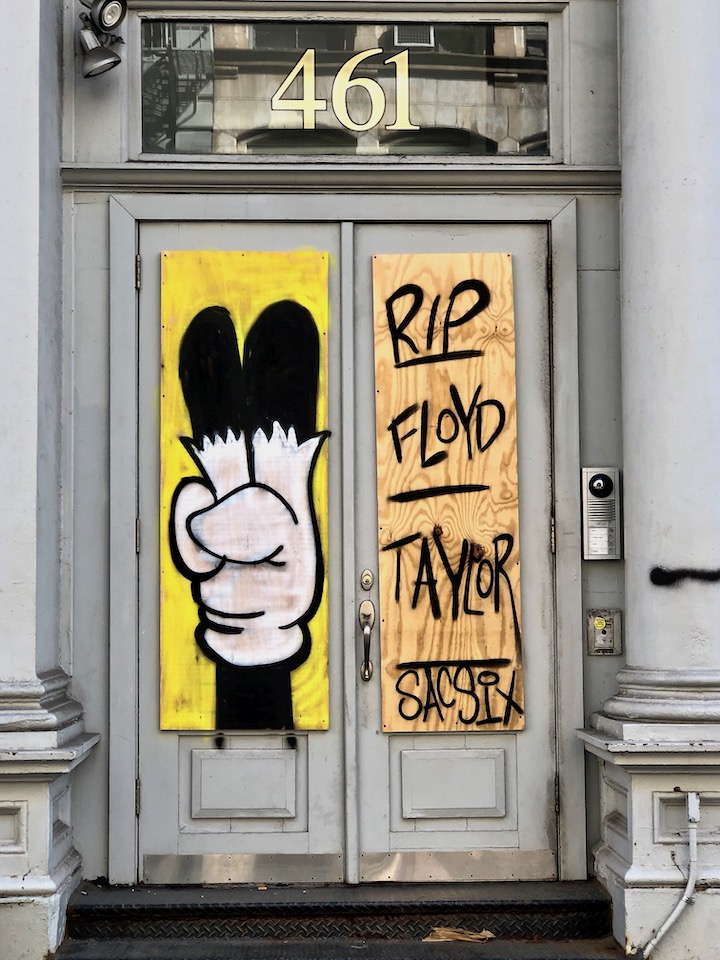
NYC-based multidisciplinary artist Jo Shane at work posting political texts

Some musings from an anonymous source
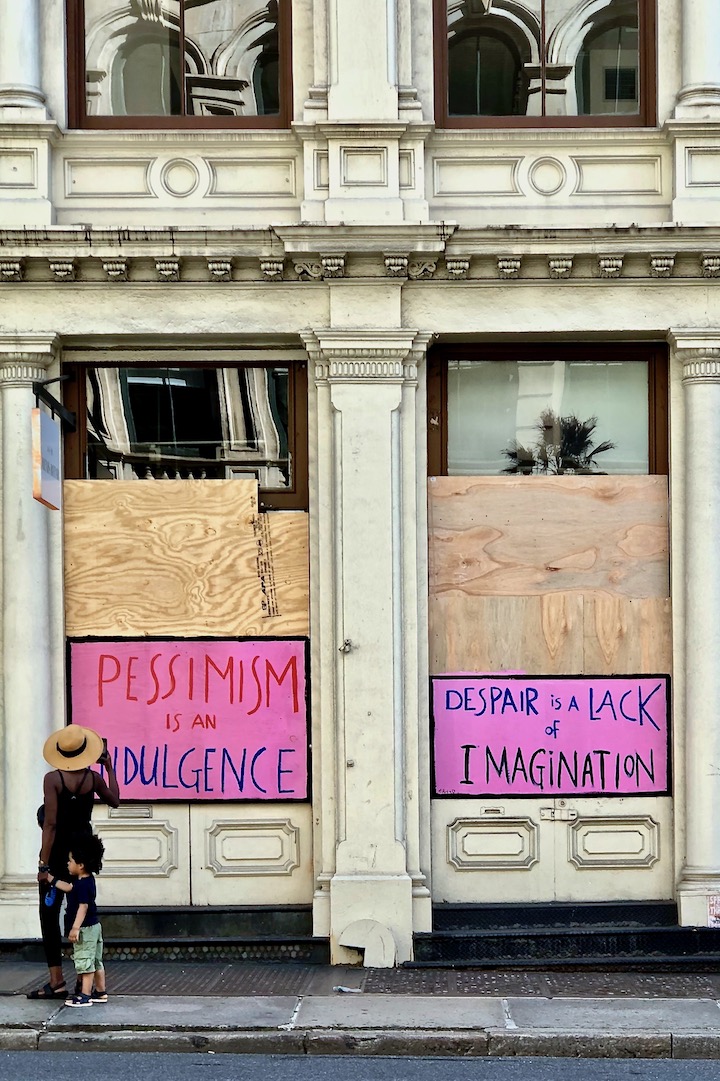
Brooklyn-based Kamila Zmrzla-Otcasek, to the left of Mia and Adrien Otcasek
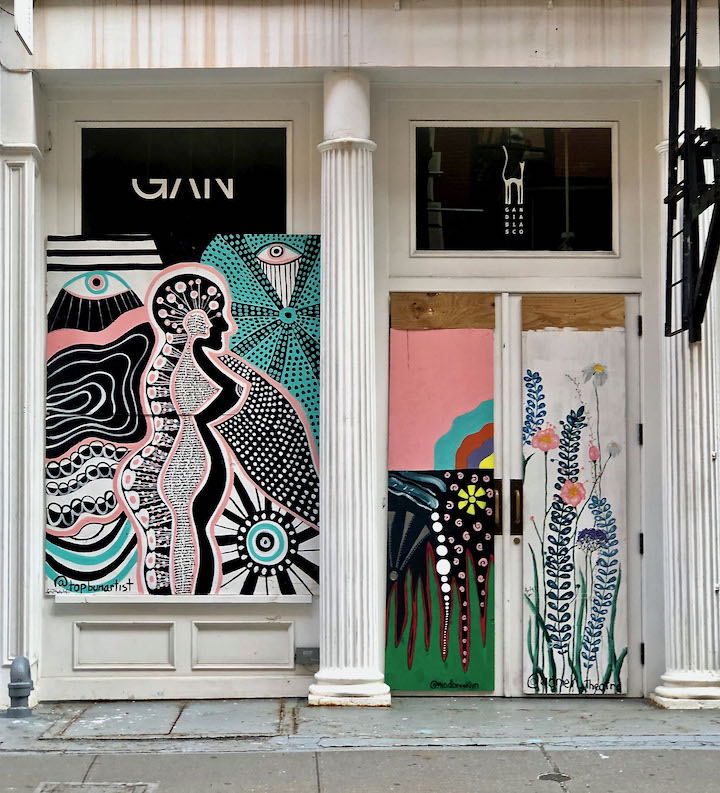
NYC-based artist and animator Sara Lynne Leo
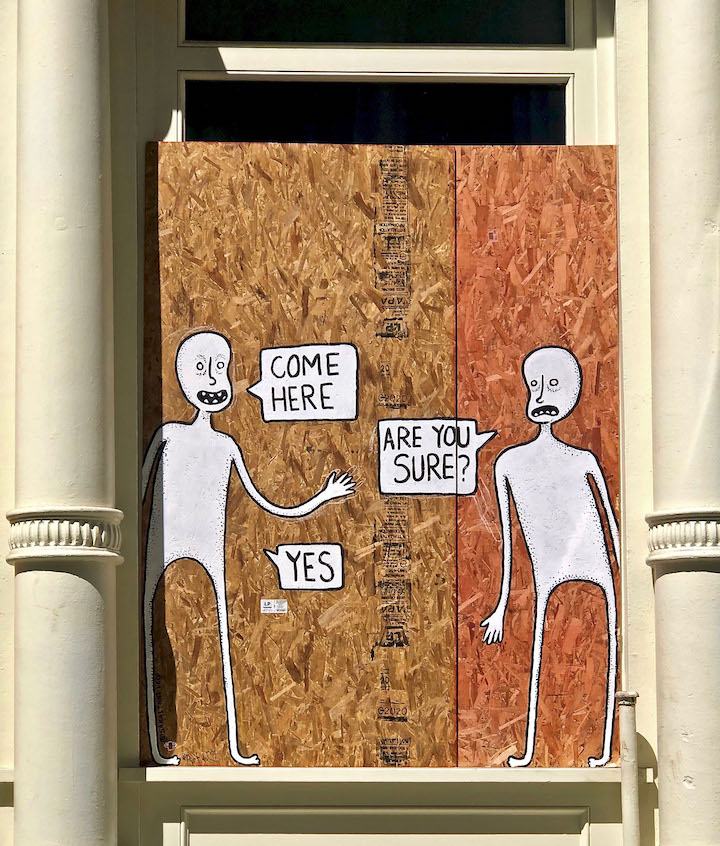
Brooklyn-based Denis Ouch
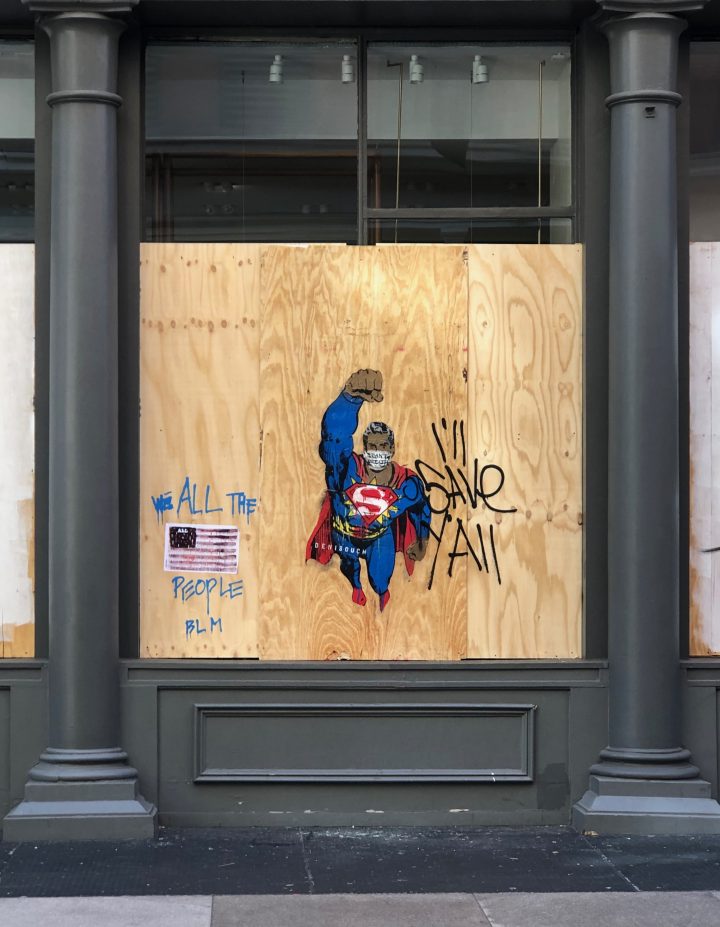
The prolific Optimo NYC
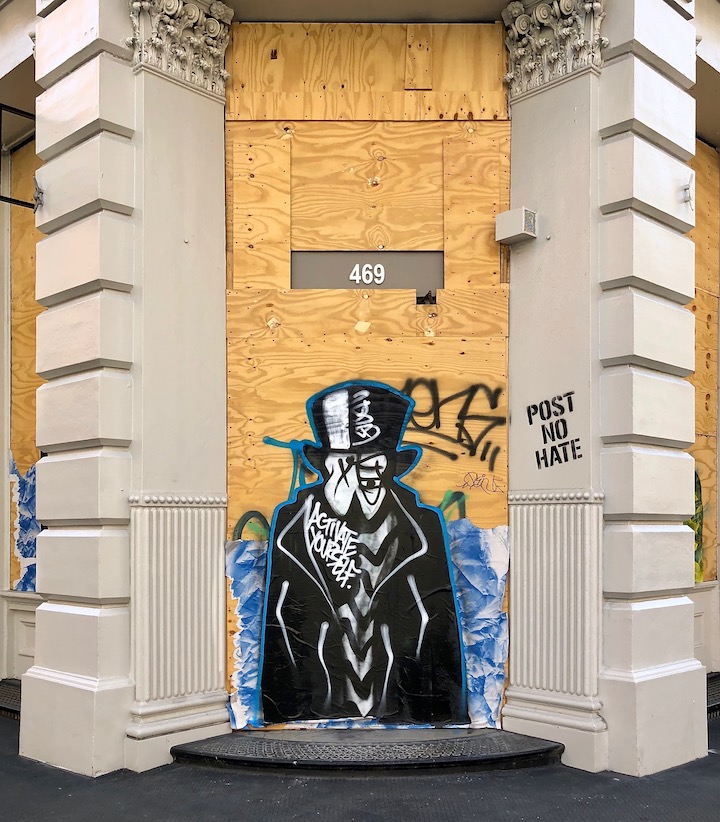
Photos by Lois Stavsky
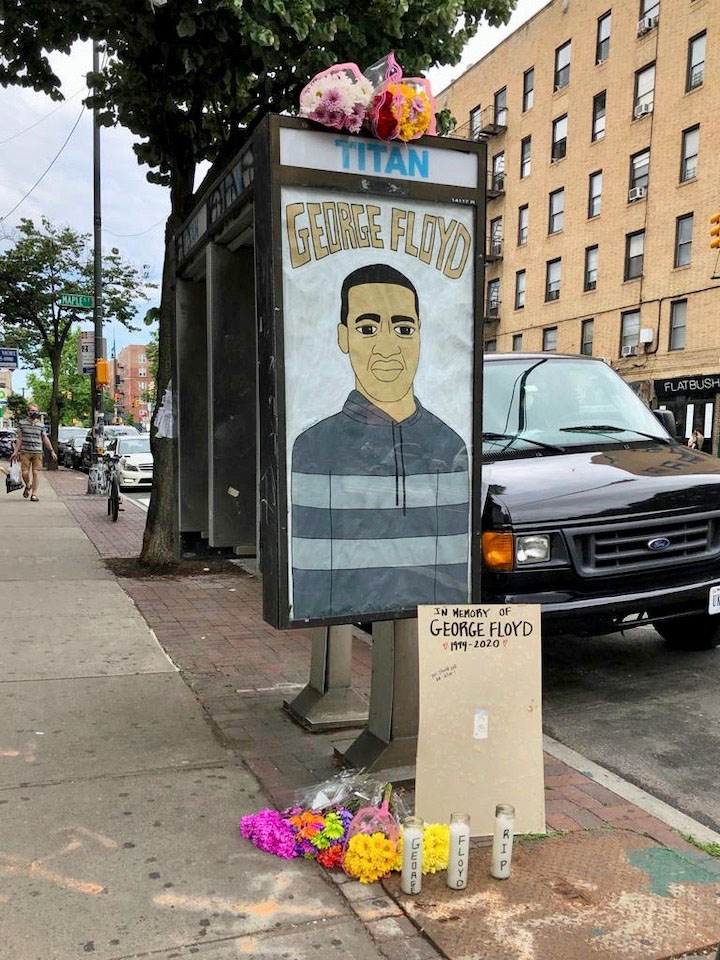
Since George Floyd, an unarmed 46-year-old black man, was murdered in broad daylight on May 26 by police in Minneapolis, Minnesota, protests have risen up throughout the world. Here in NYC, our streets have teemed with images and signs, along with daily peaceful and powerful protests in all five boroughs. The image featured above in memory of George Floyd was fashioned by Sara Erenthal in her Prospect Lefferts Garden neighborhood. Several more images recently seen on NYC streets follow:
Lmnopi, Black Lives Matter, on the Lower East Side
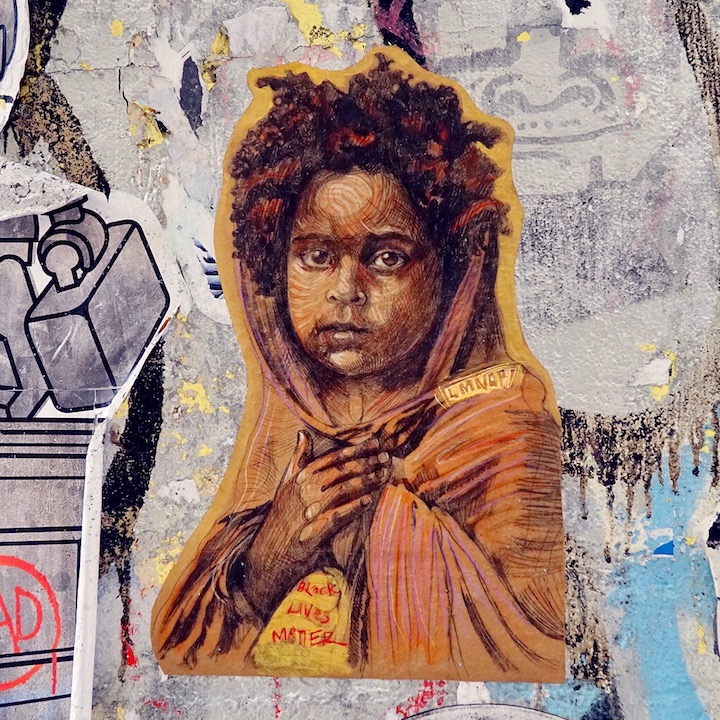
An unidentified school-age child getting the message out with chalk at Riverside Park on the Upper West Side
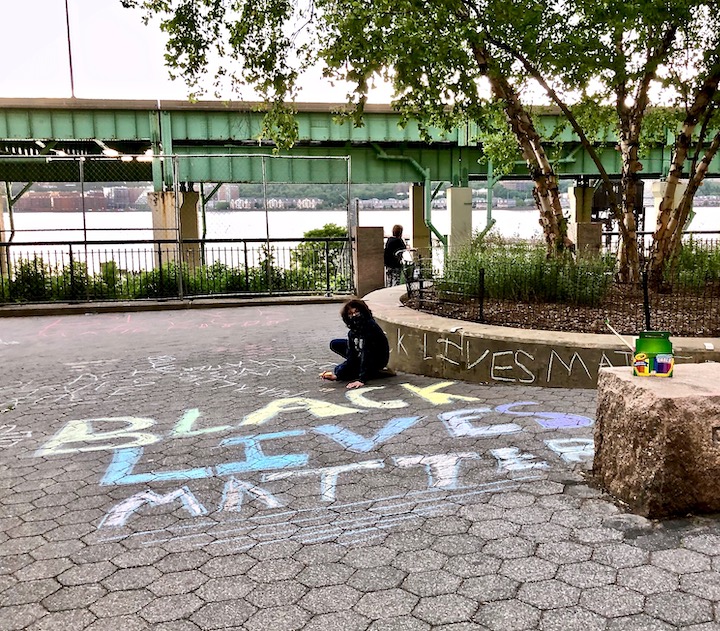
LinkNYC for #BlackOutTuesday on the Upper West Side
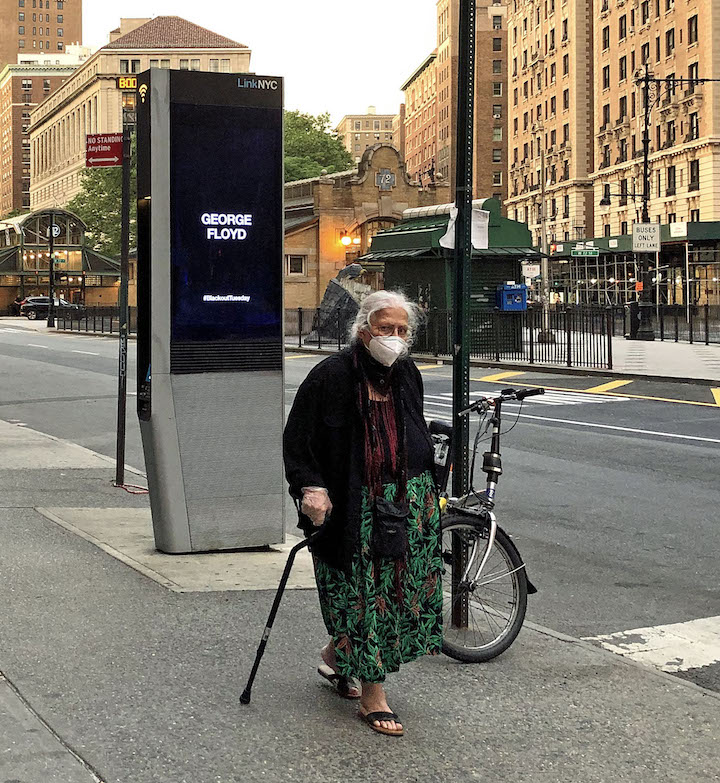
Stickers posted near Gracie Mansion on the Upper East Side
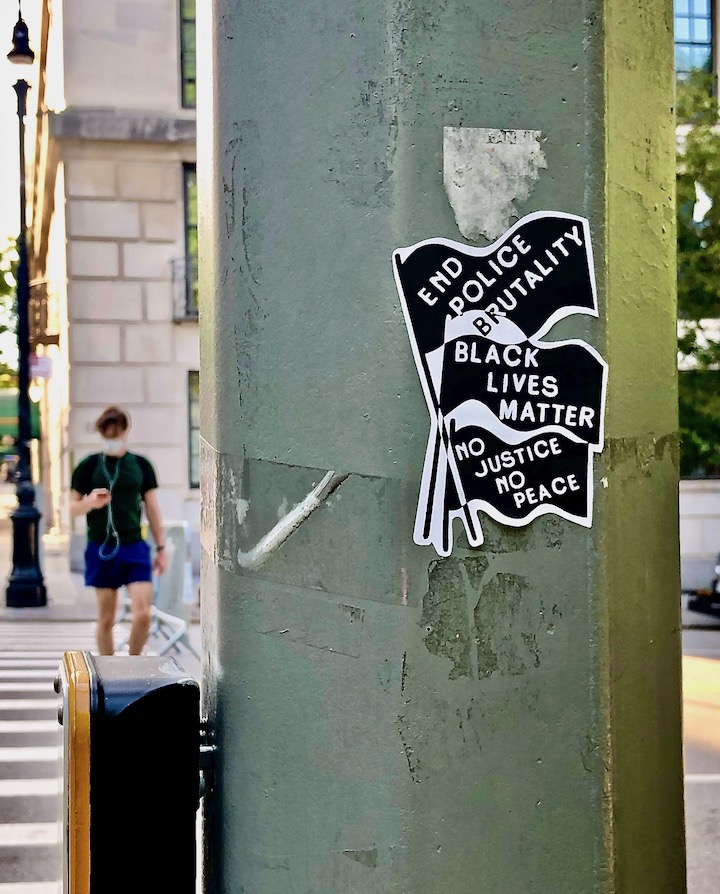
Sign fashioned by West Coast — based Kate DeCiccio, seen on First Avenue in the East Village
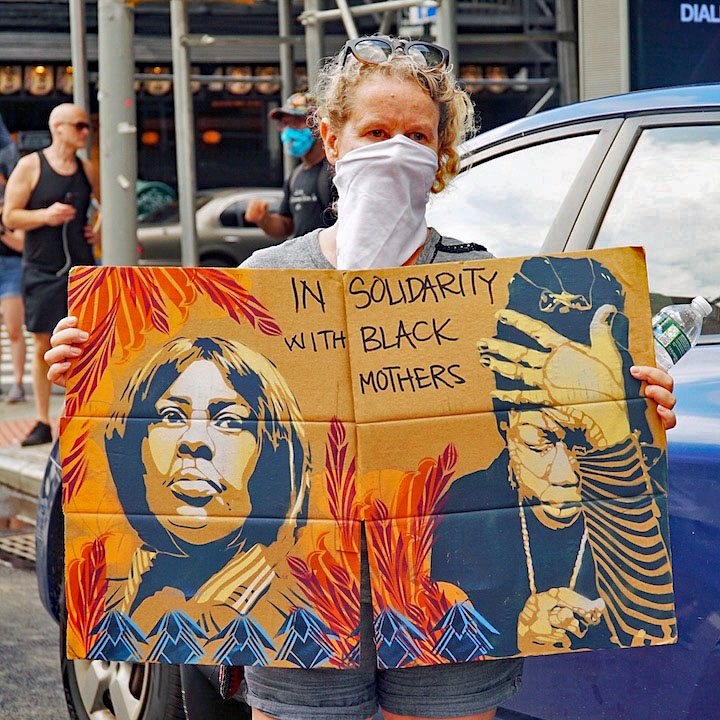
Protestors in Union Square Park demand that “our lives be free of police violence”
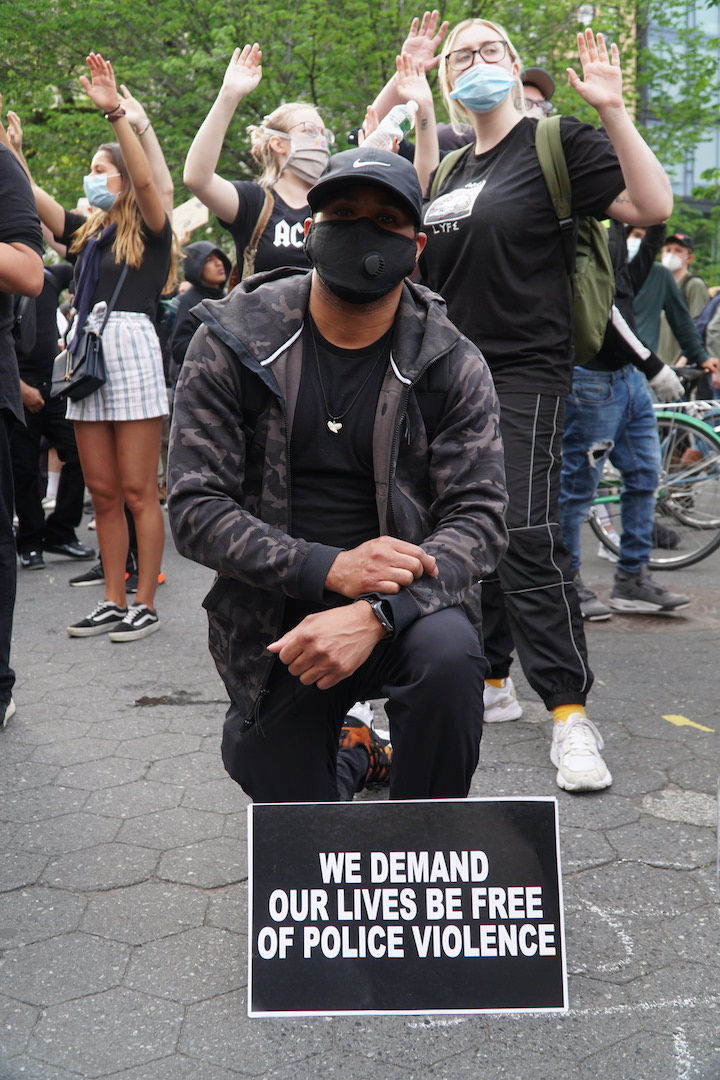
And “Justice for Floyd” — in procession walking north from Washington Square Park
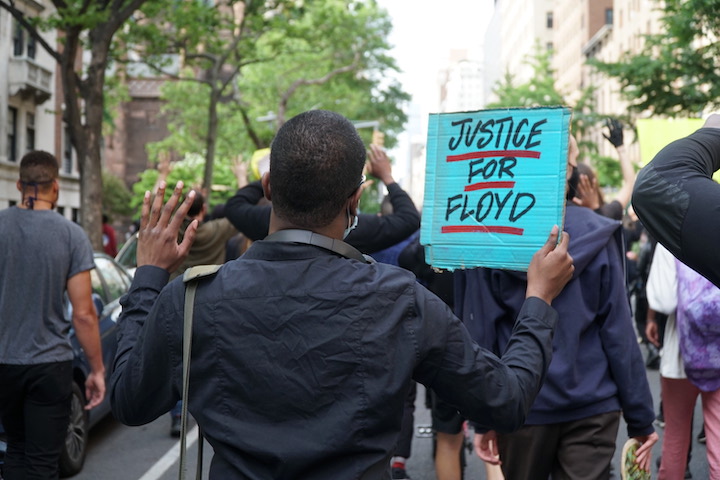
Photo credits: 1 Sara Erenthal; 2, 6-9 Ana Candelaria and 3-5 Lois Stavsky









































